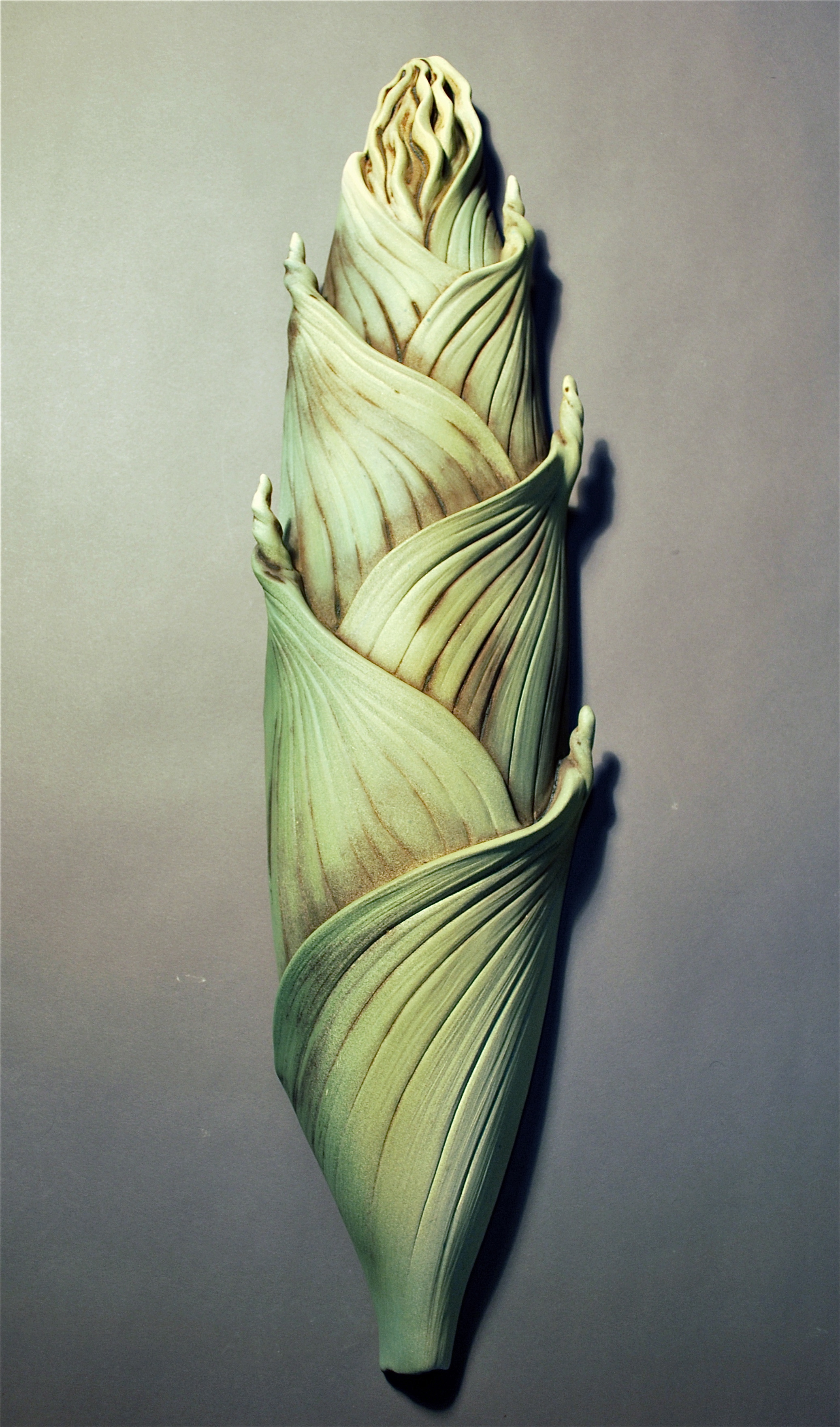
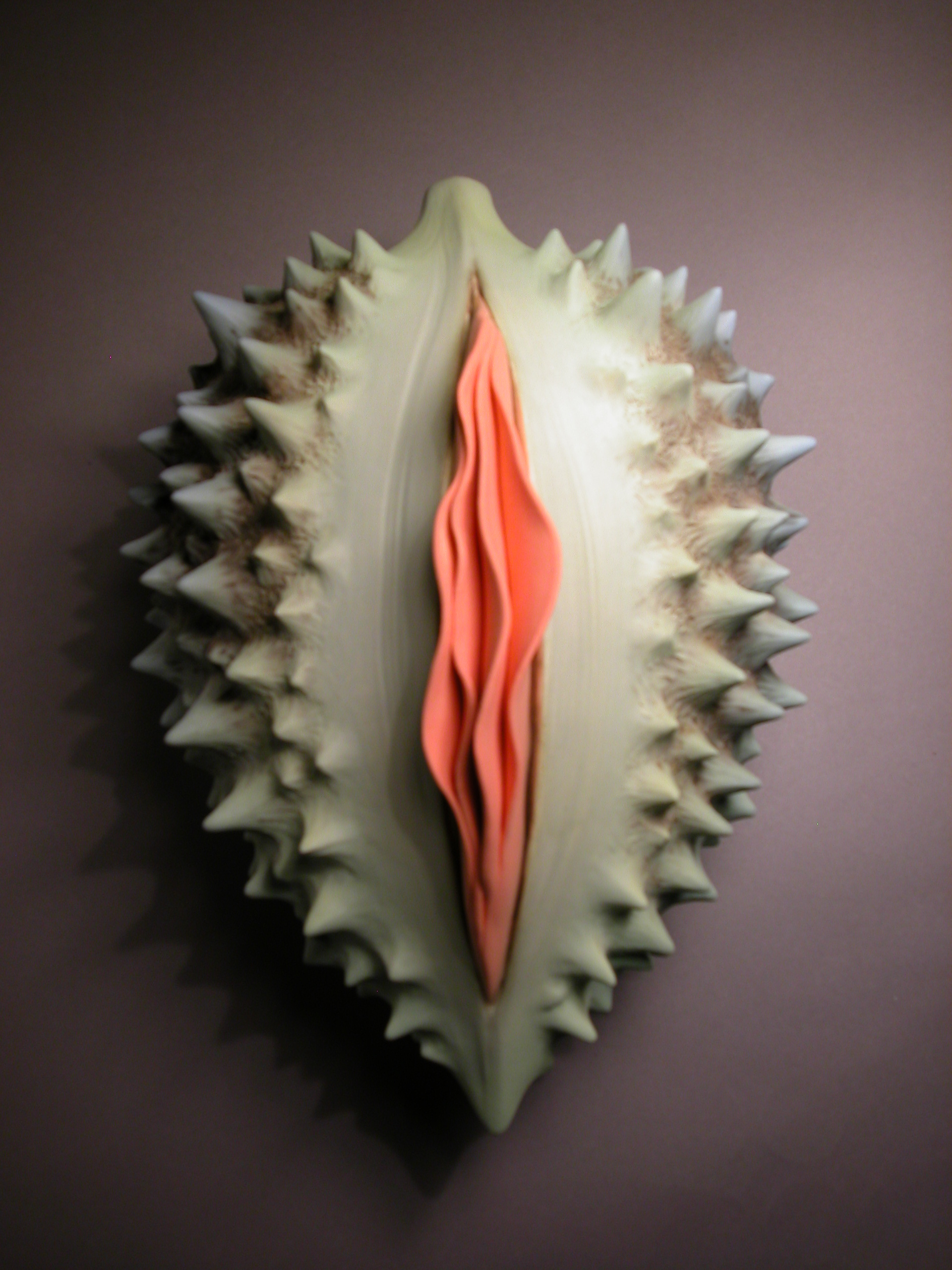
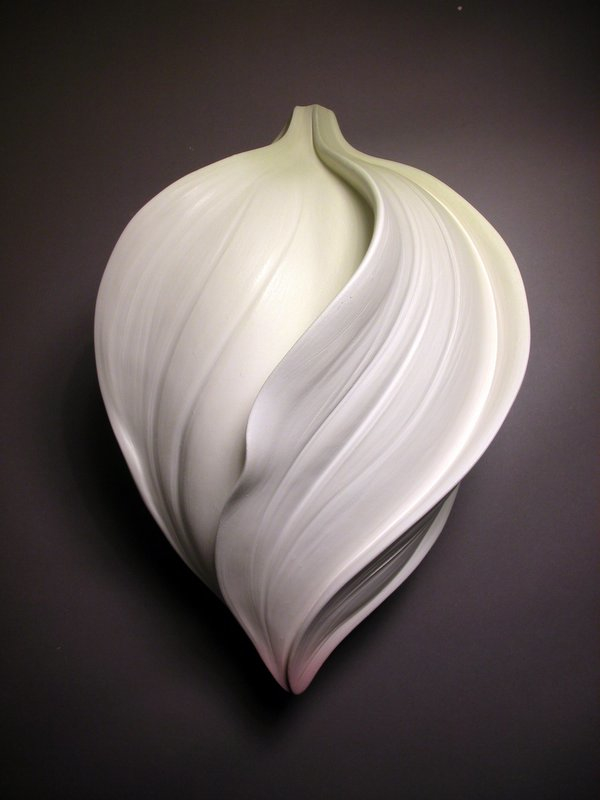

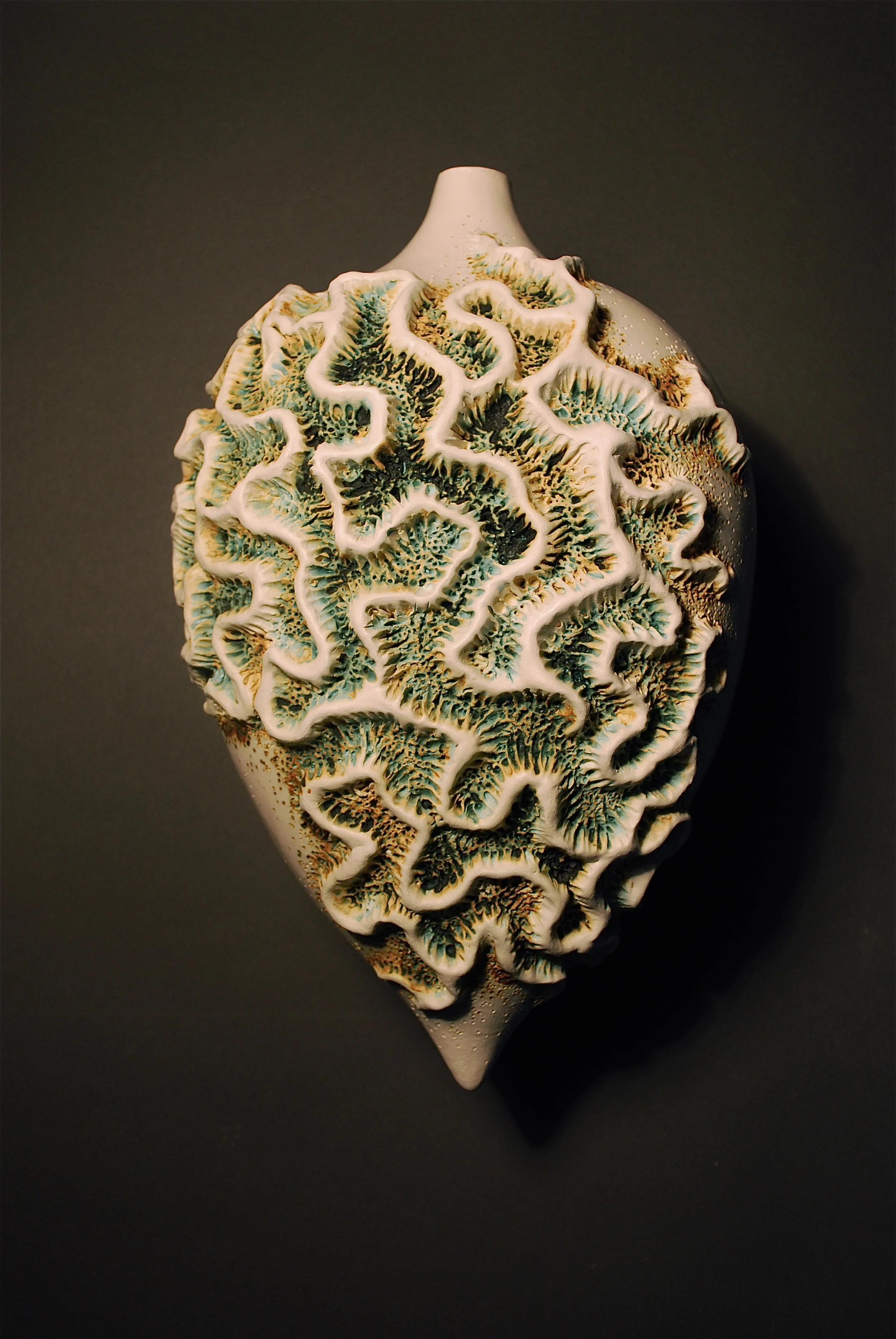
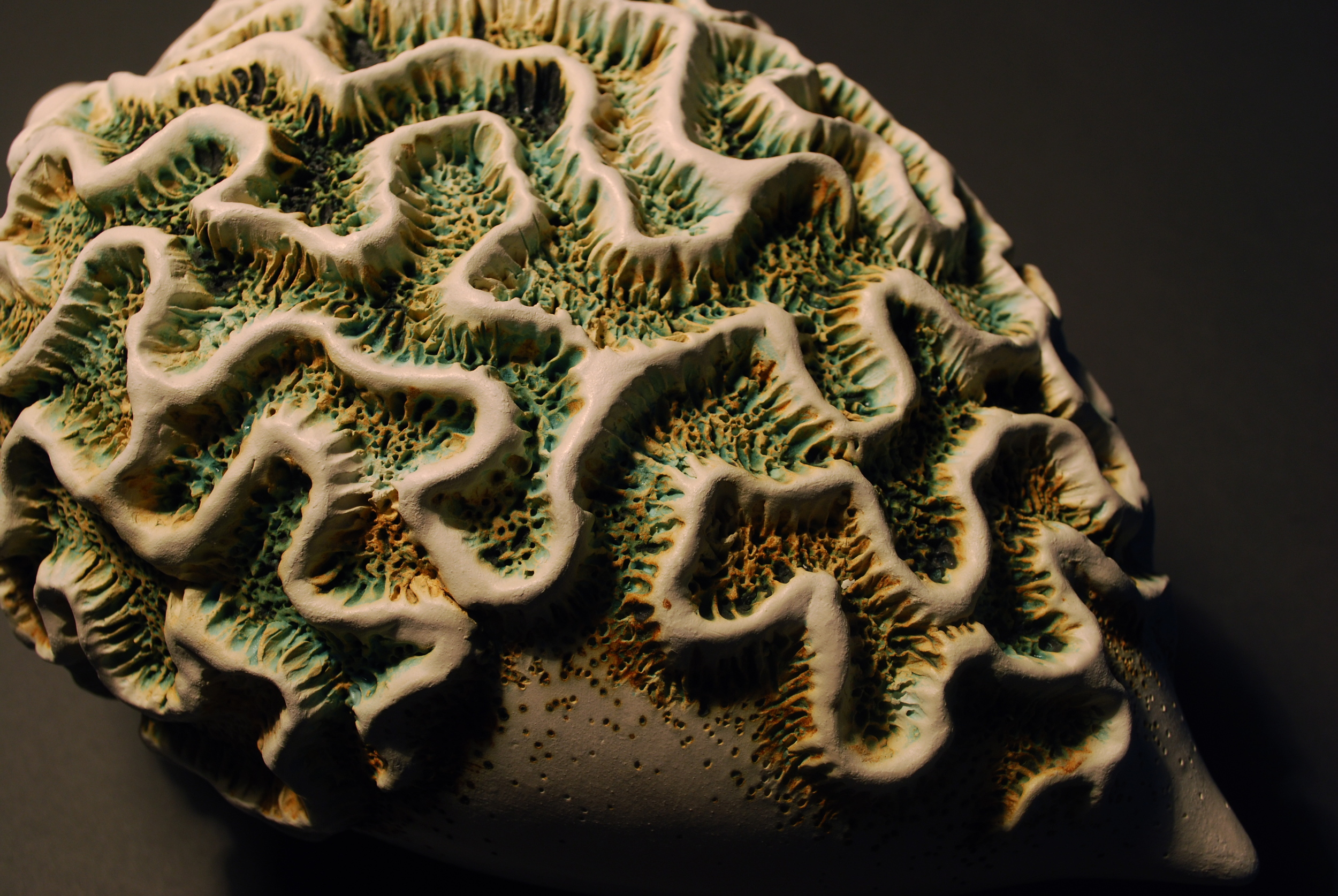
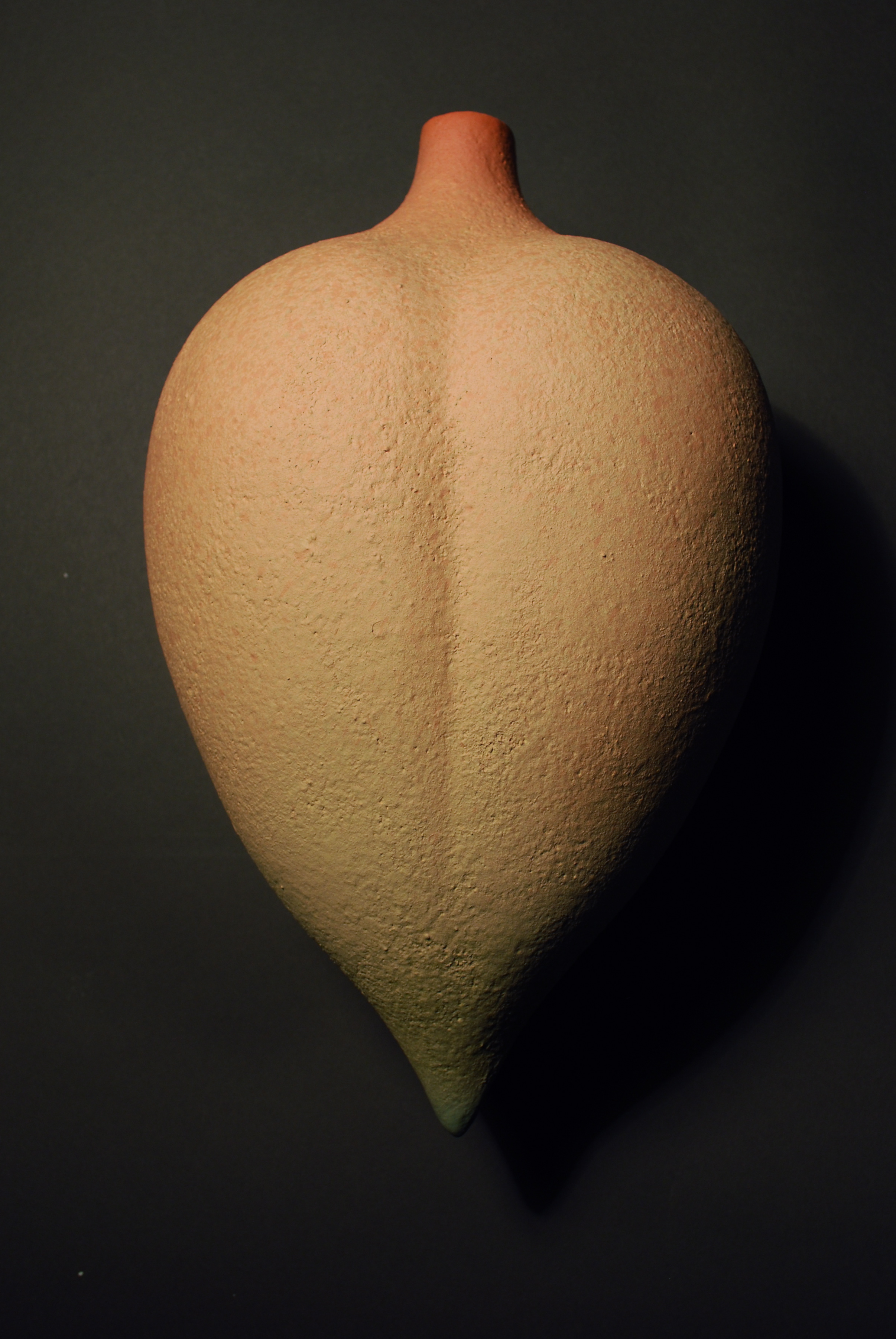
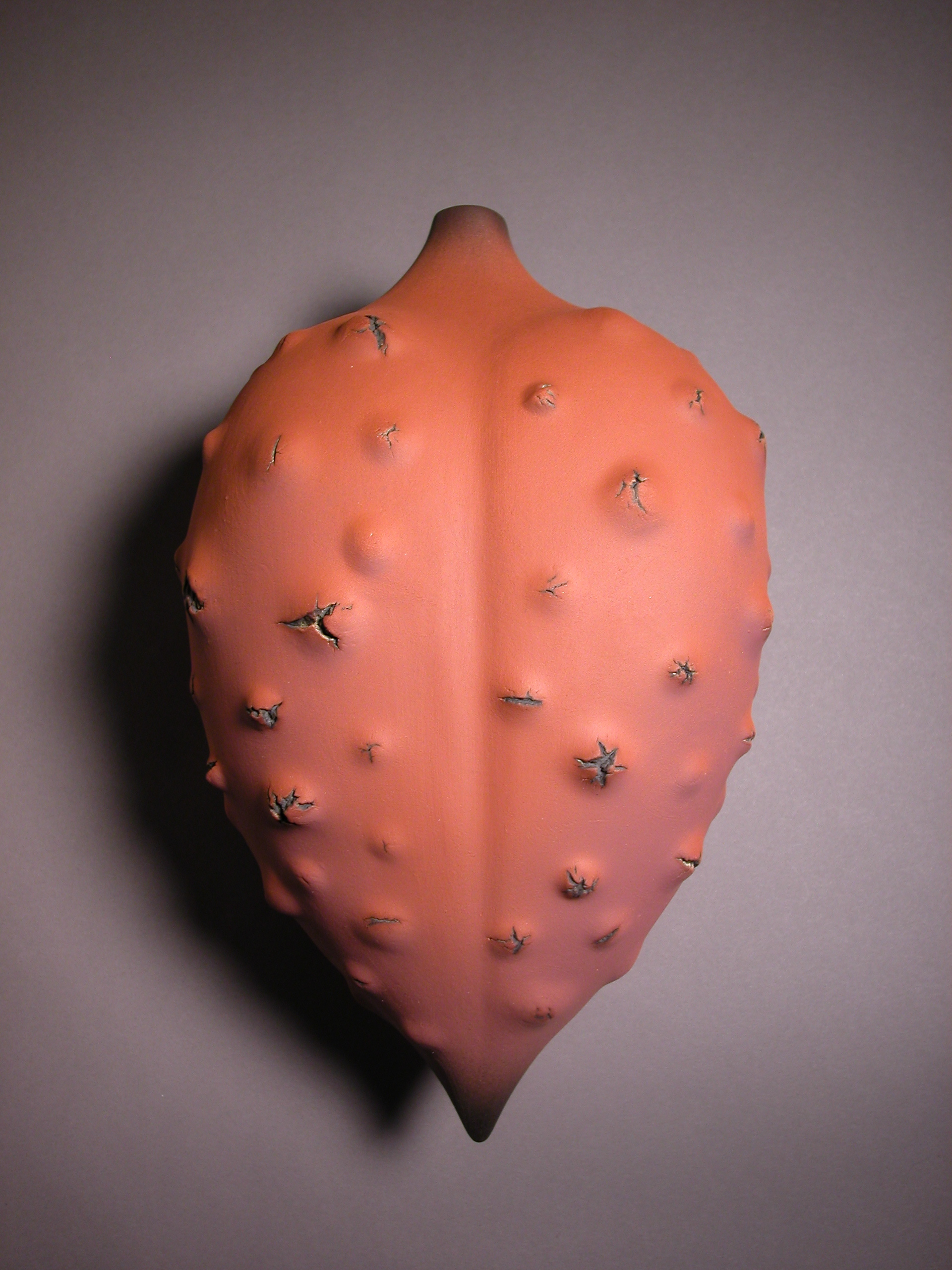

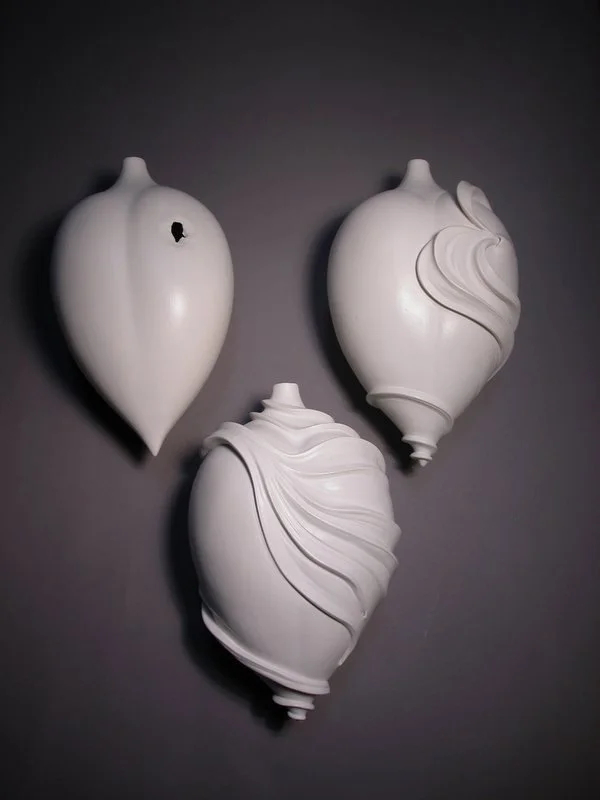
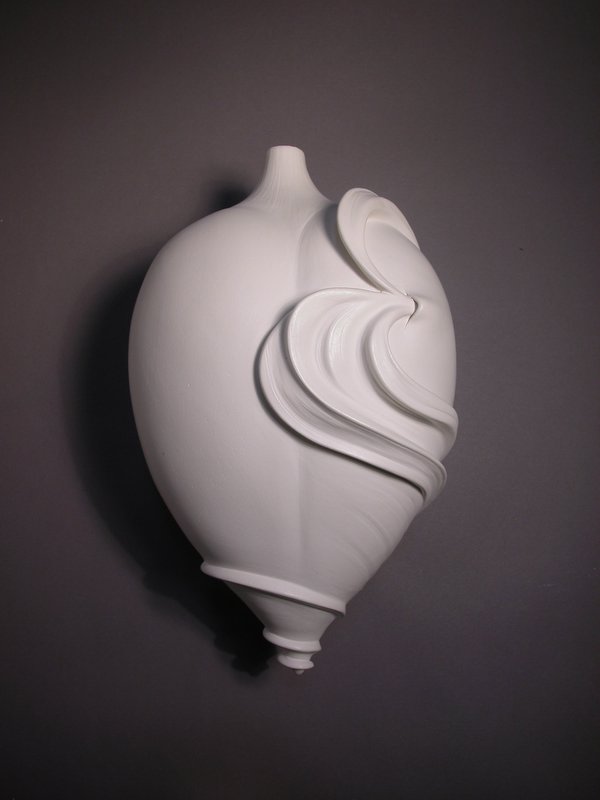

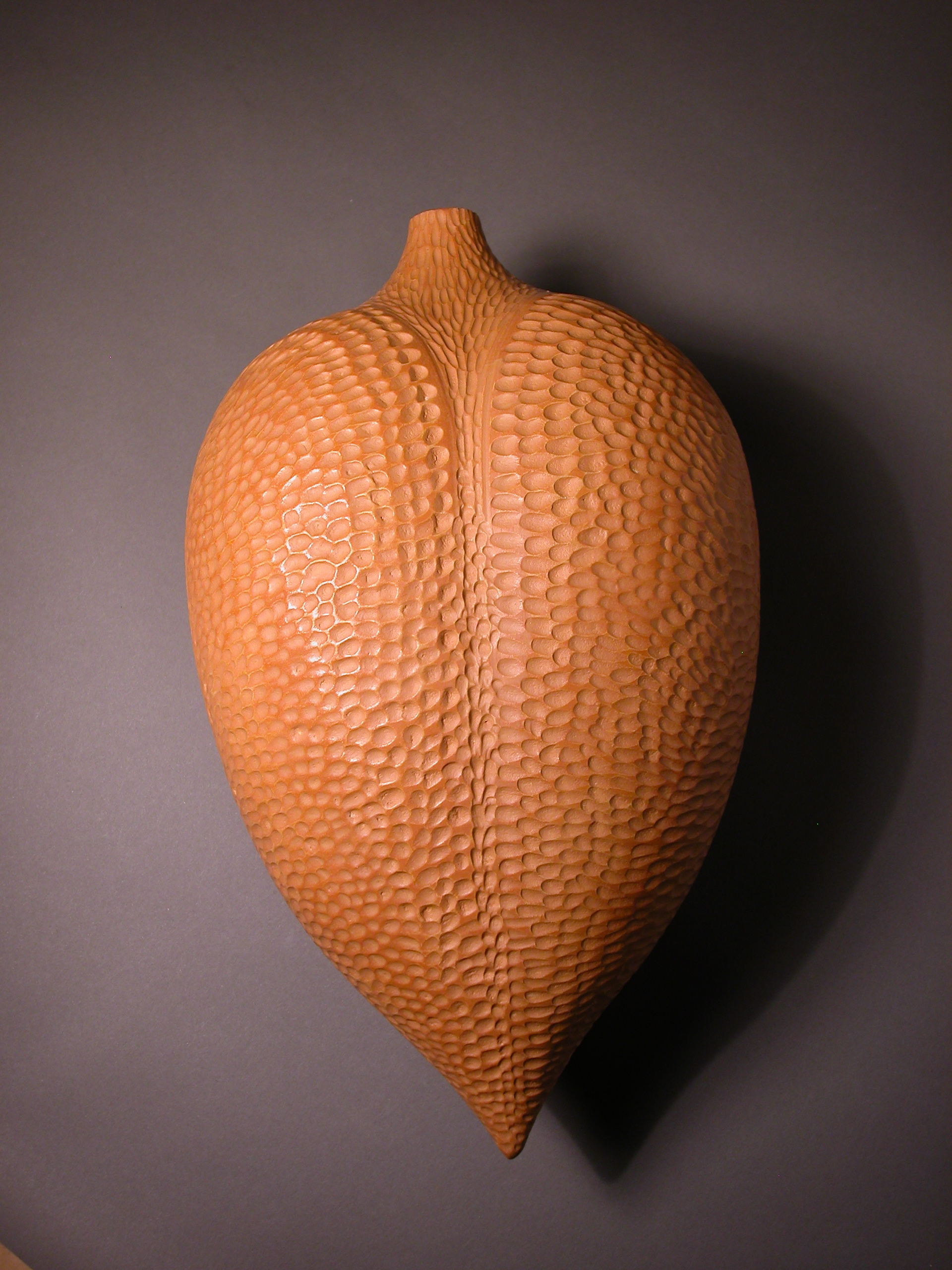
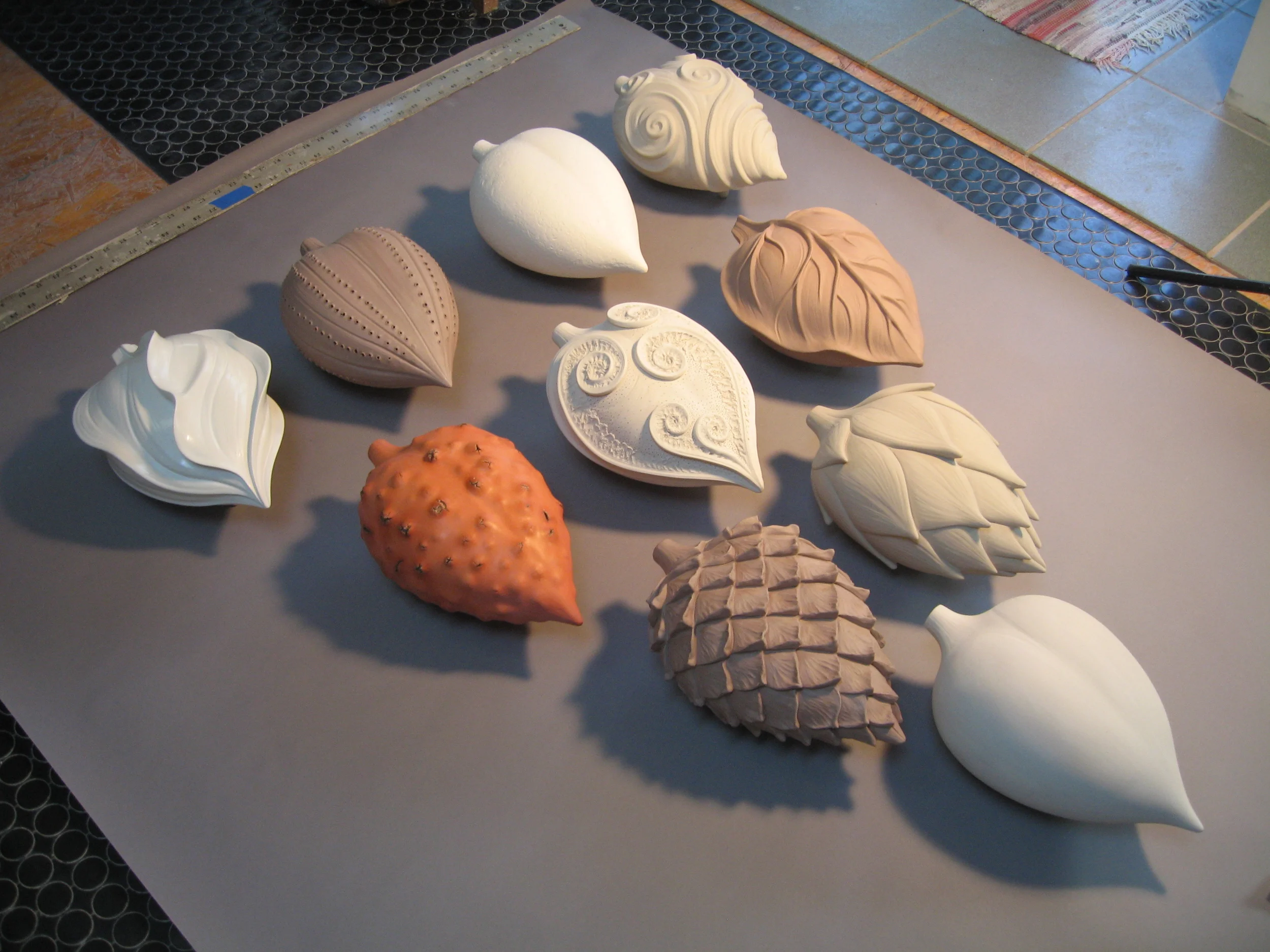
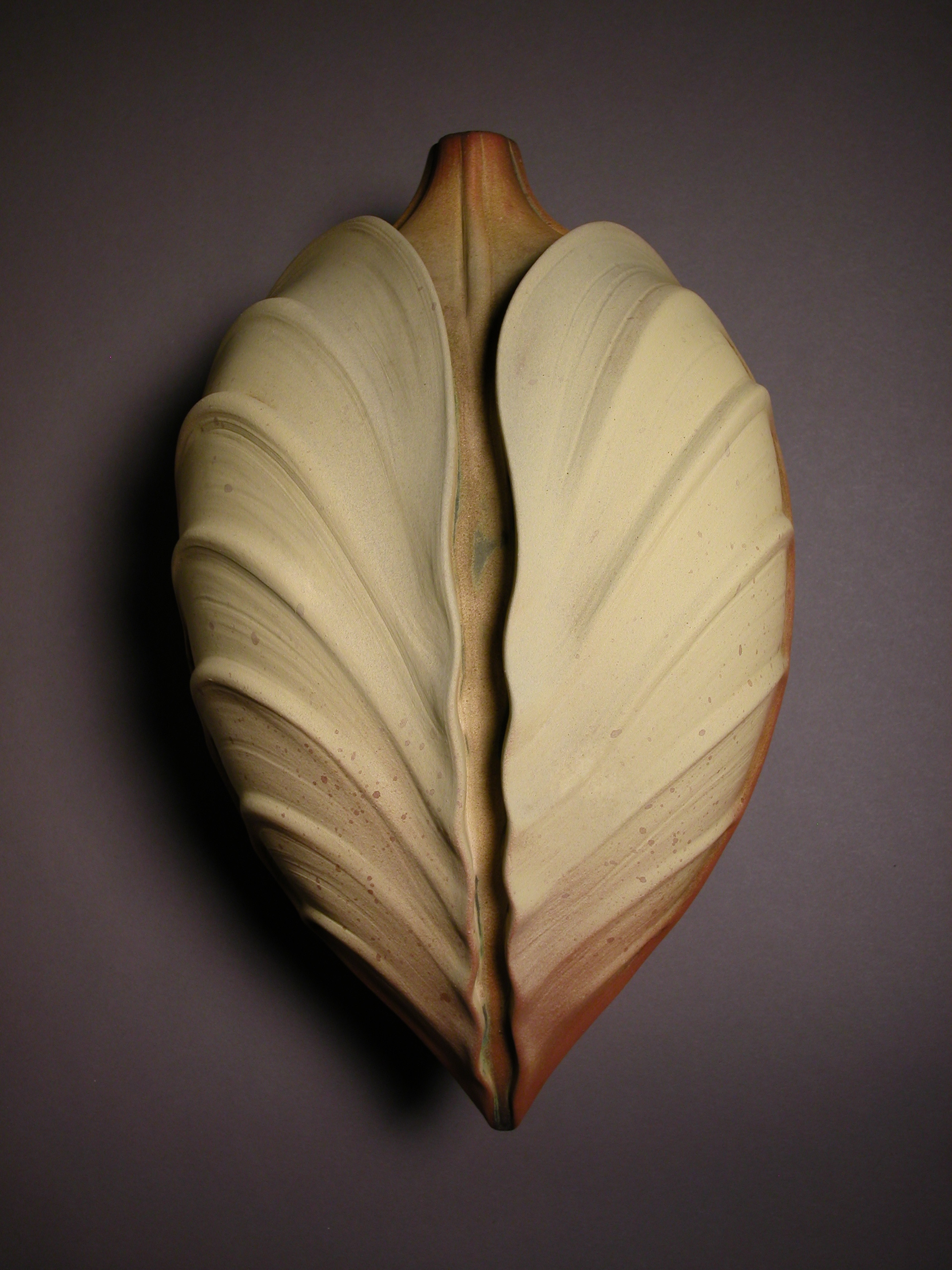
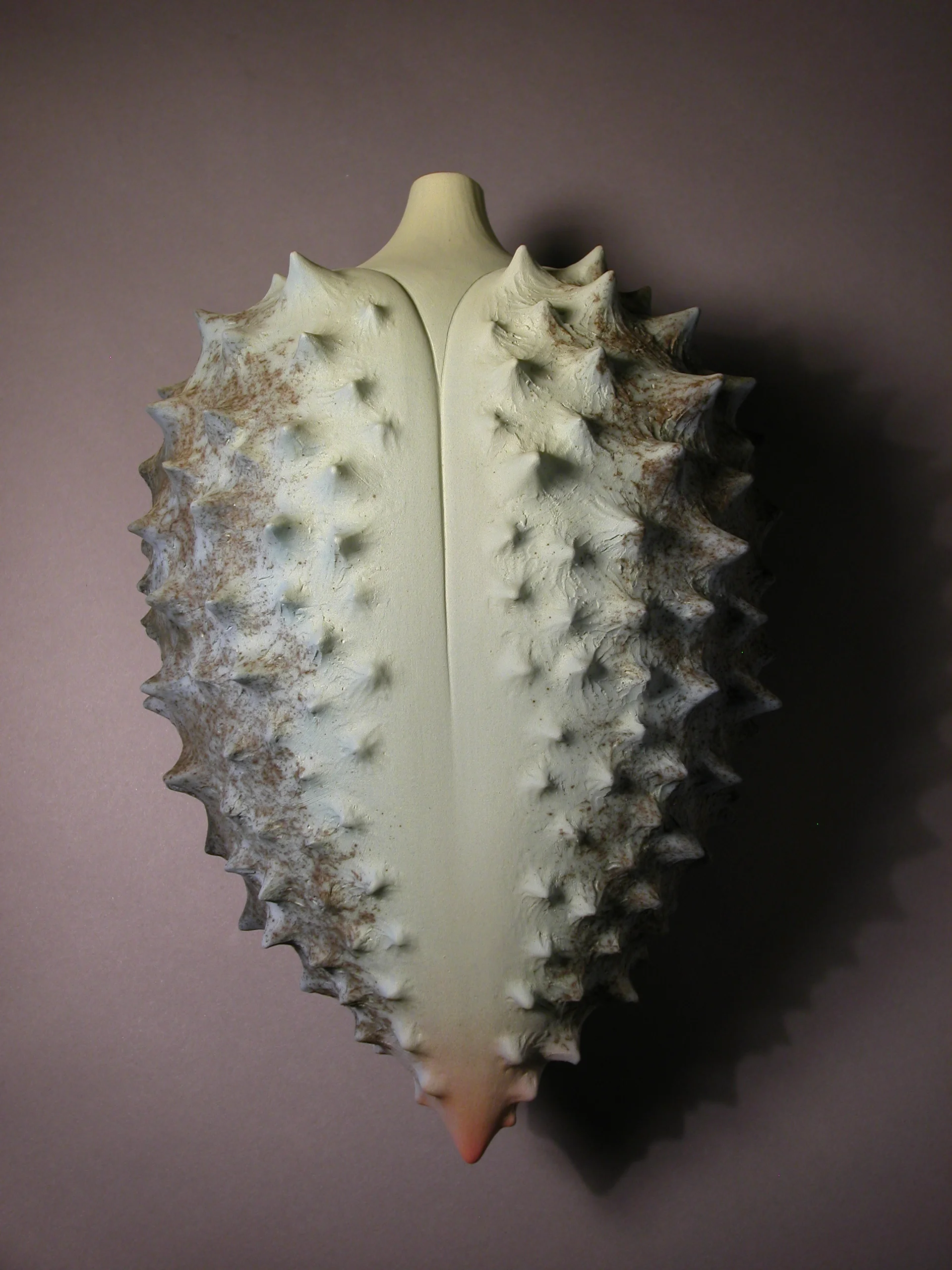
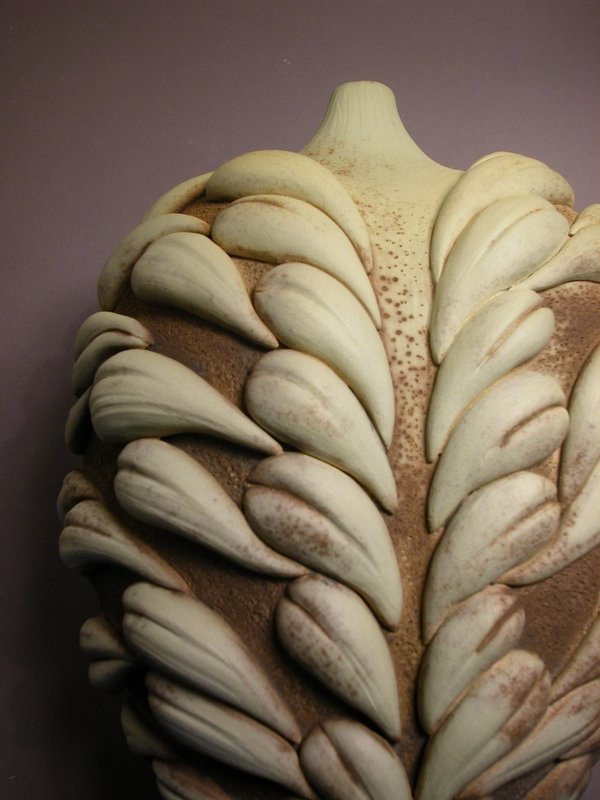

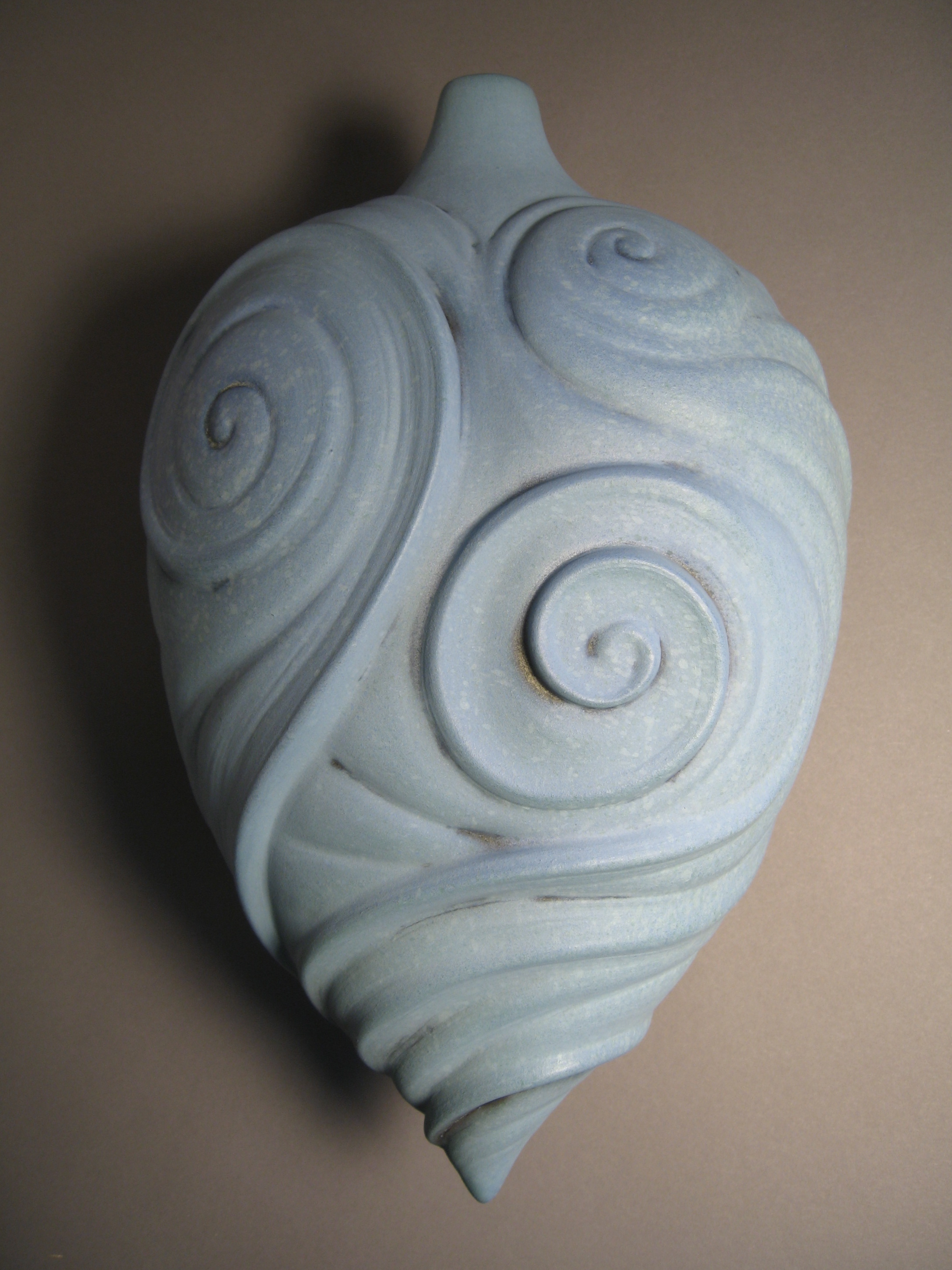
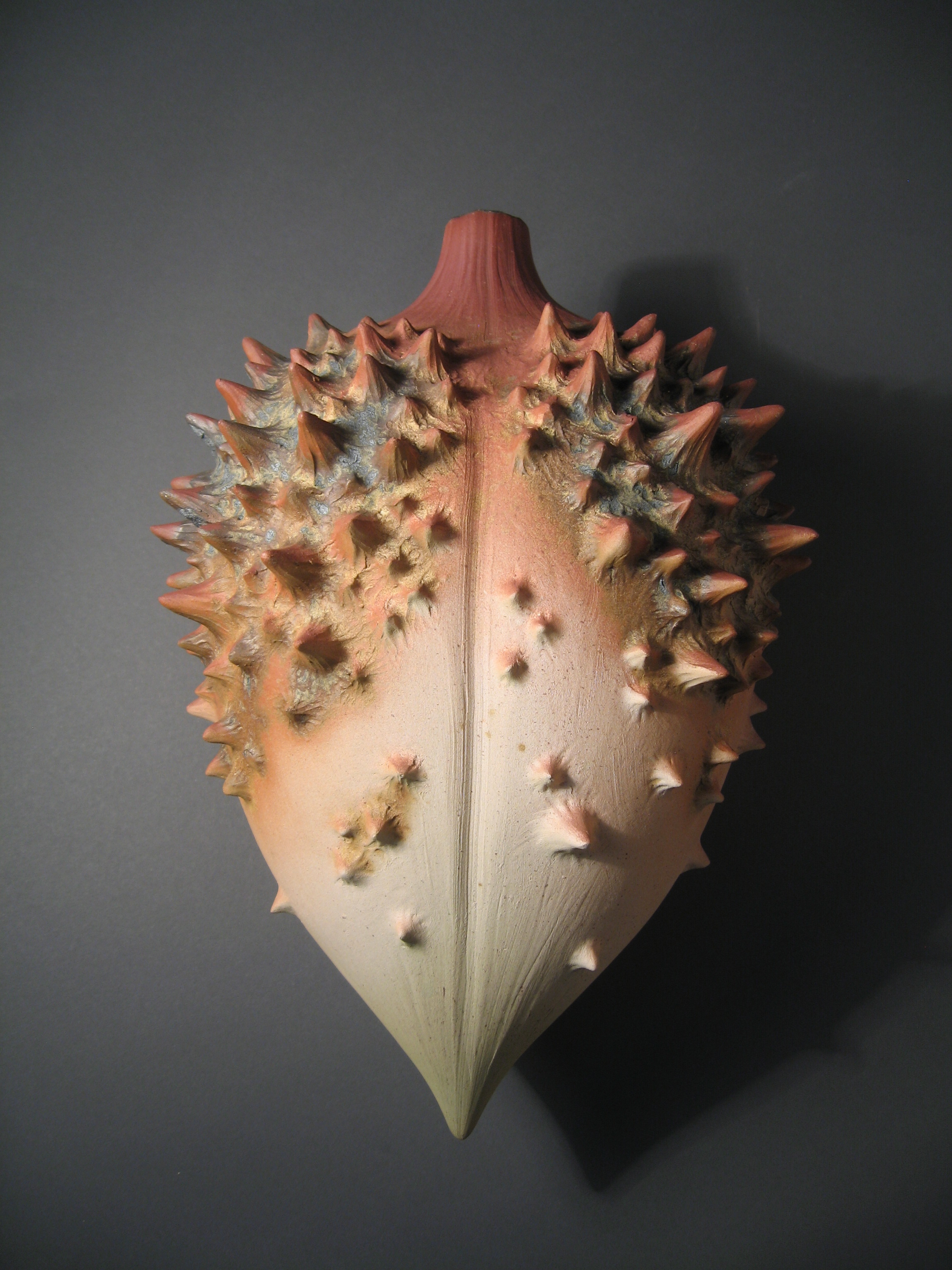
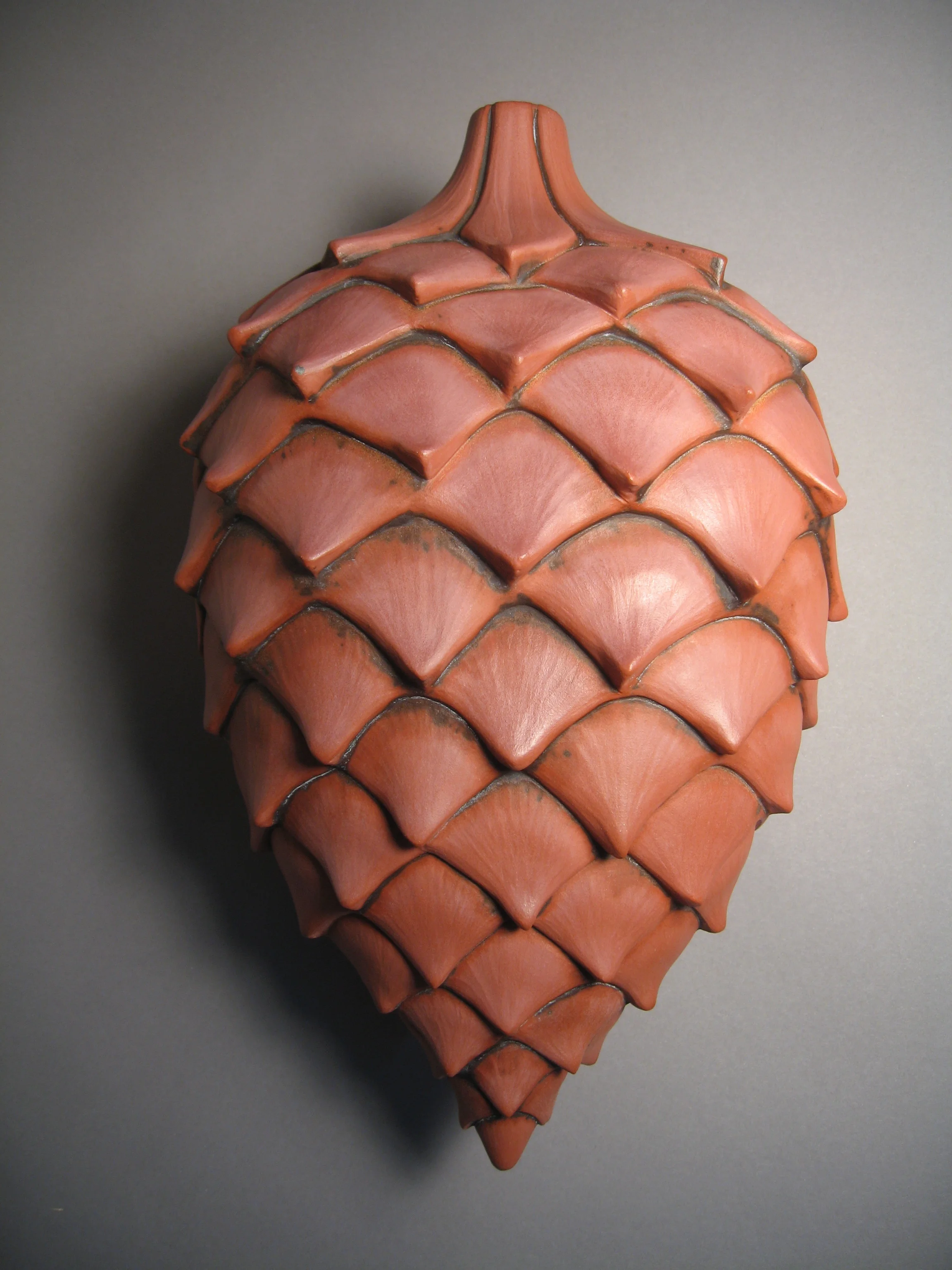
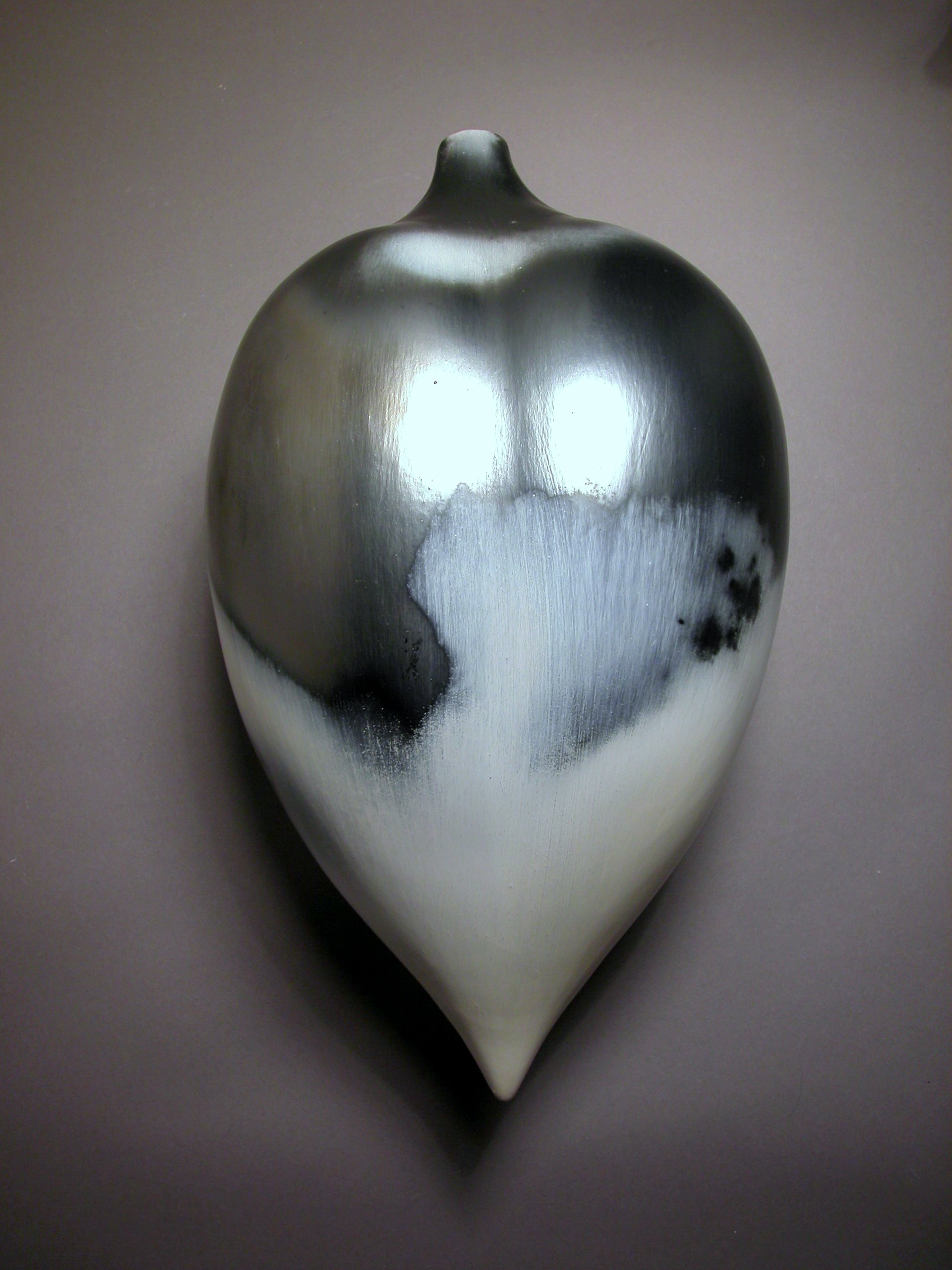



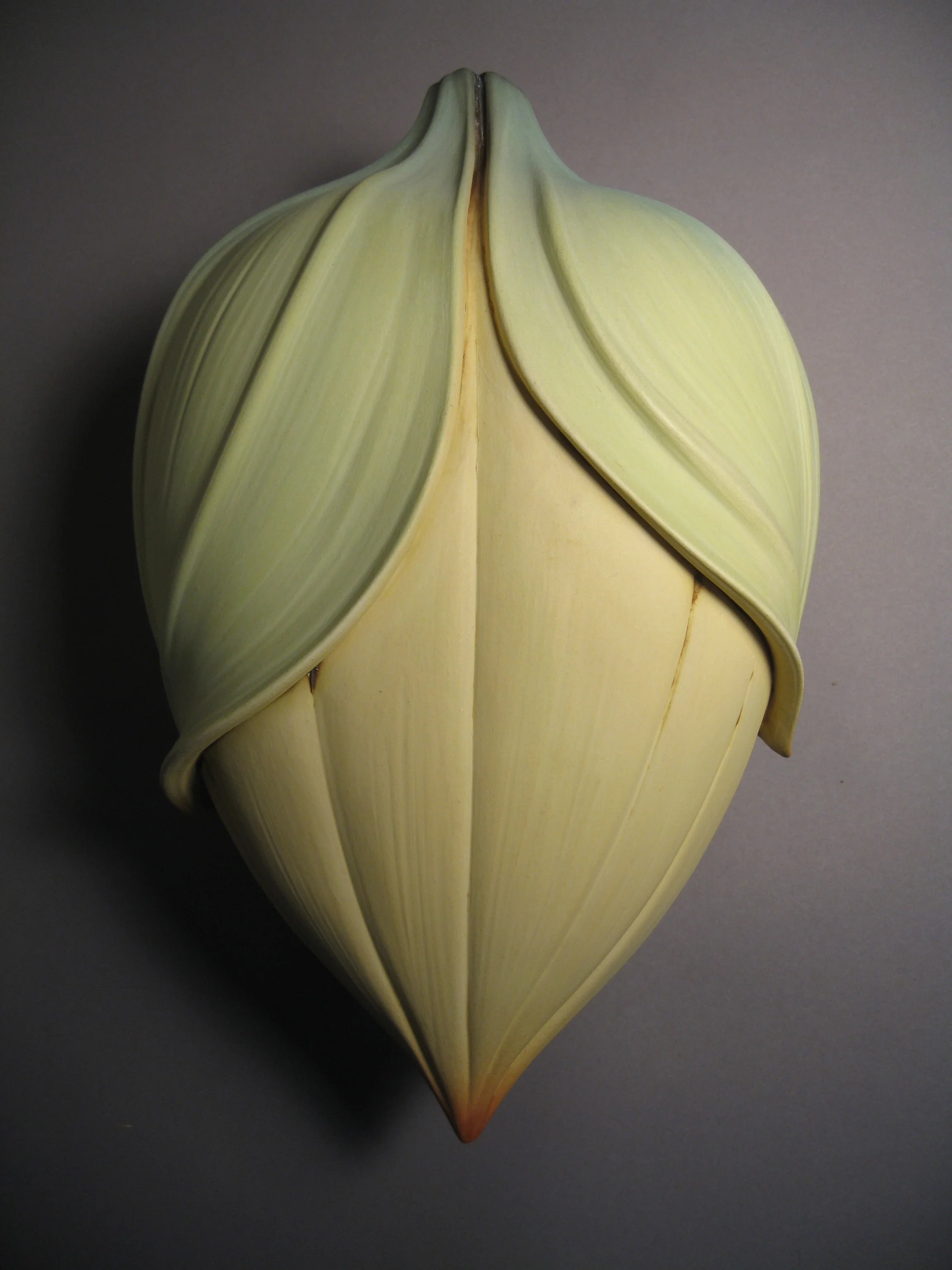
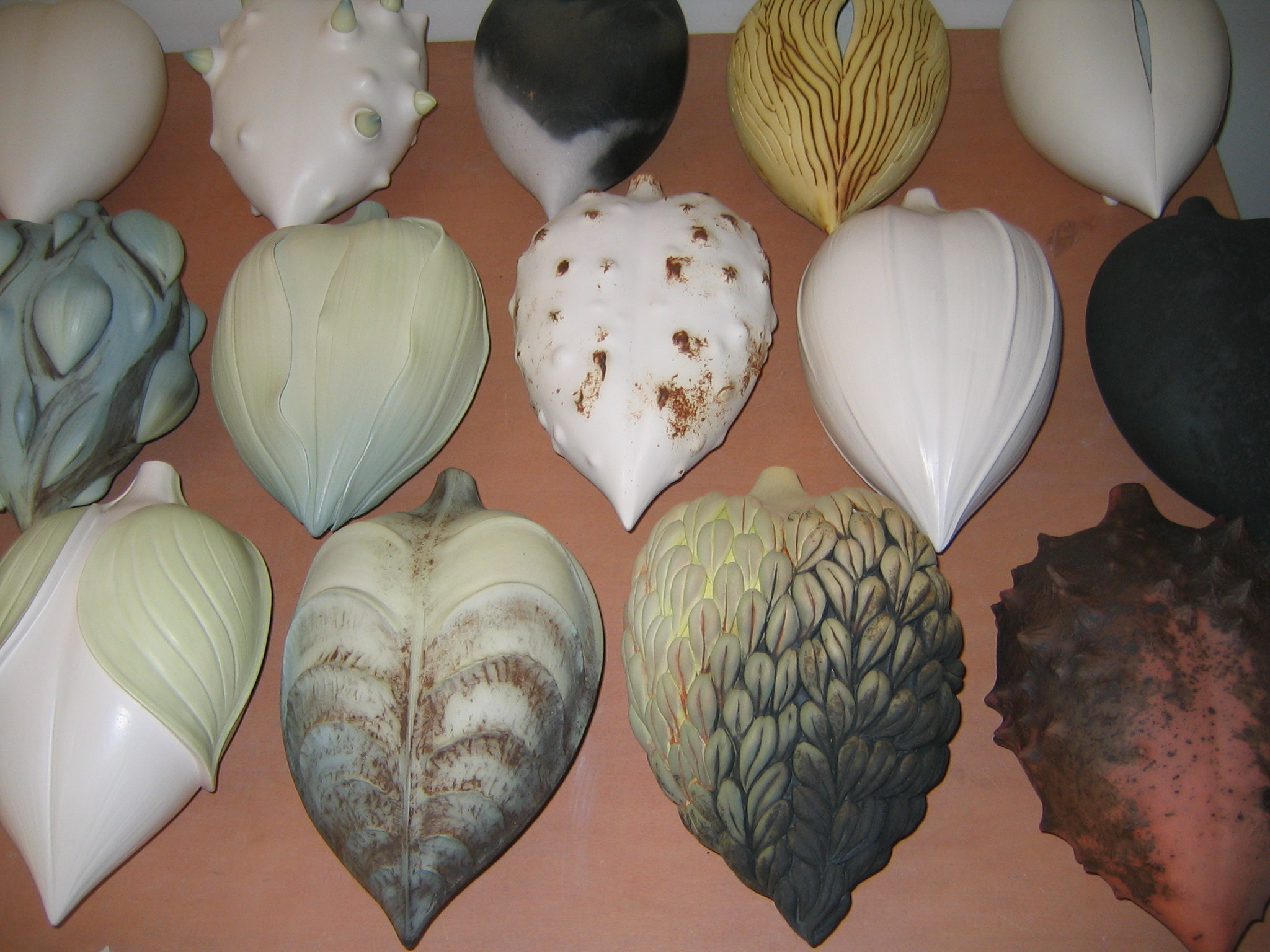
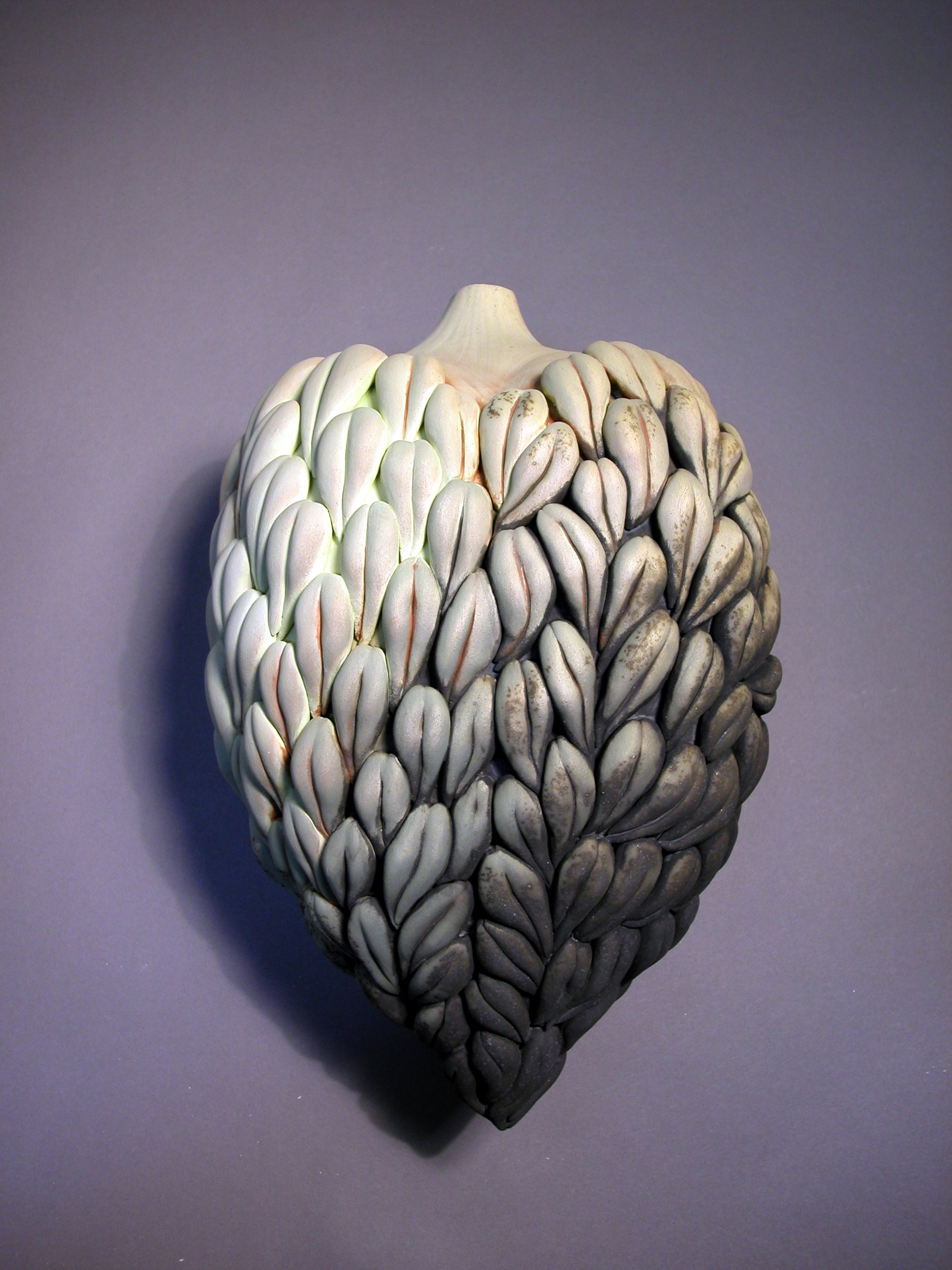

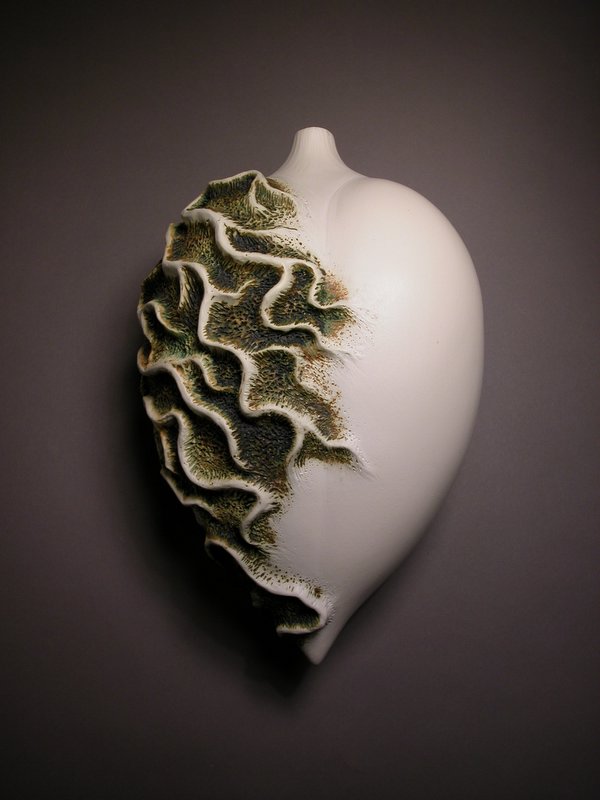
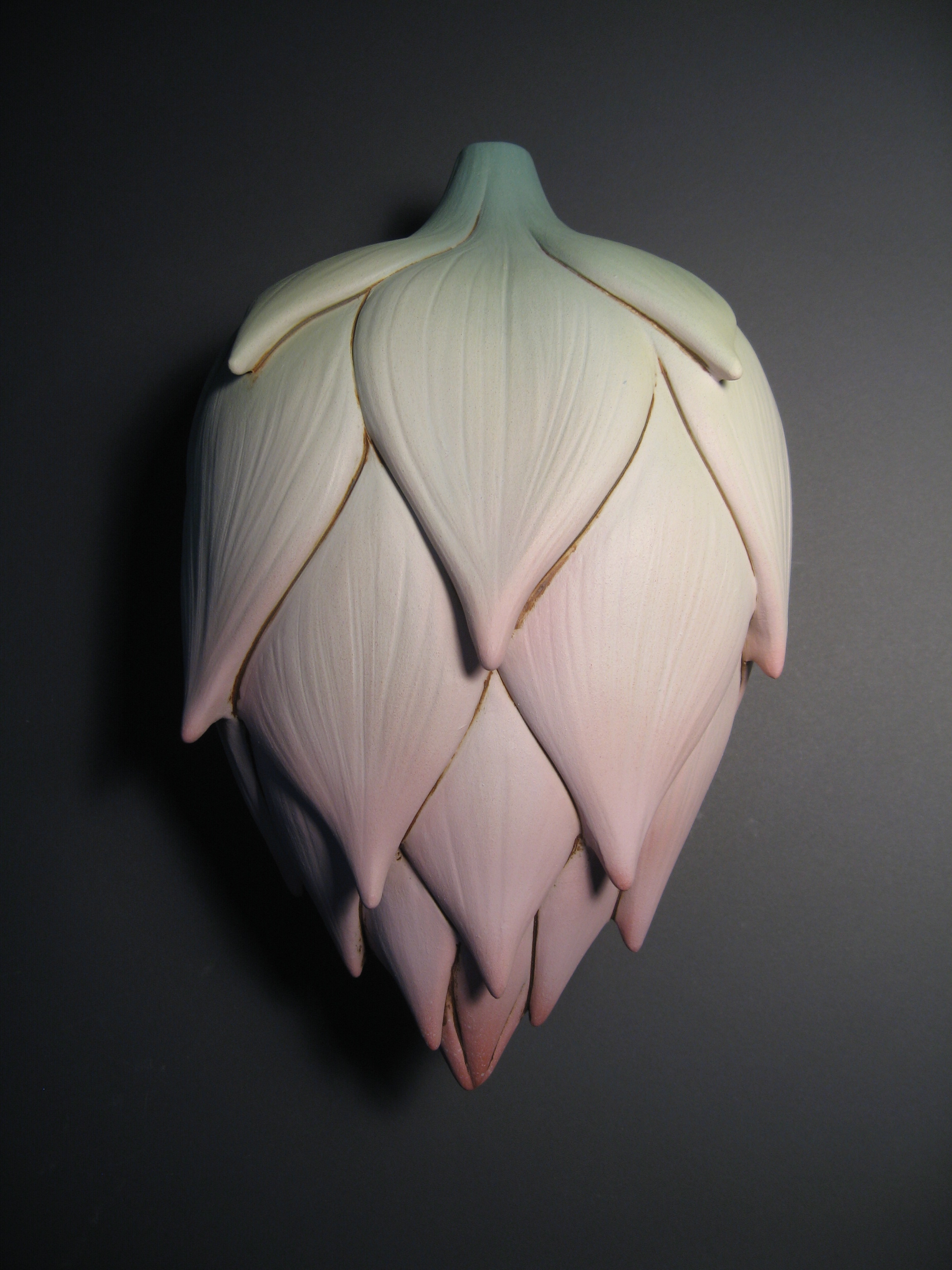
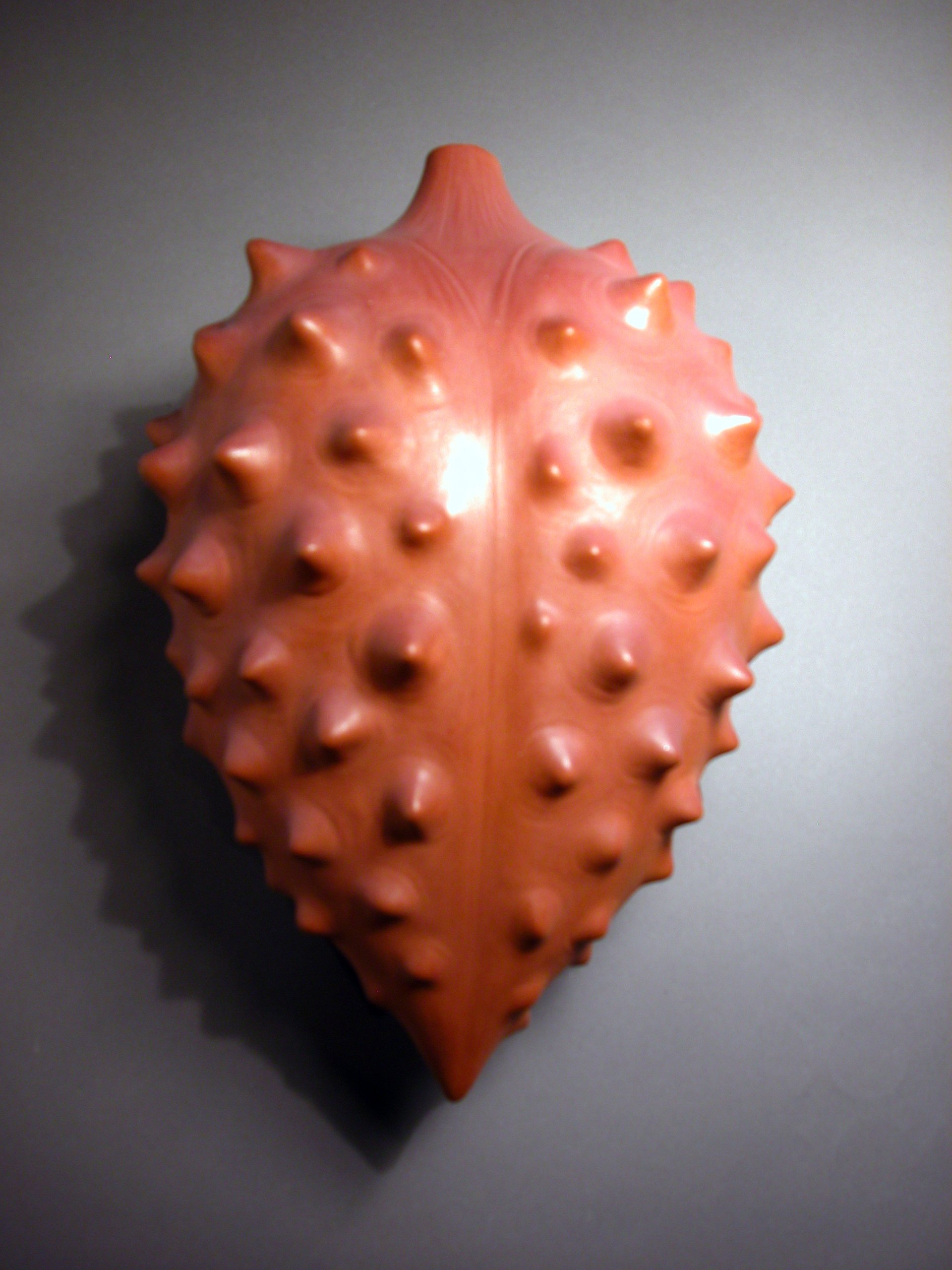
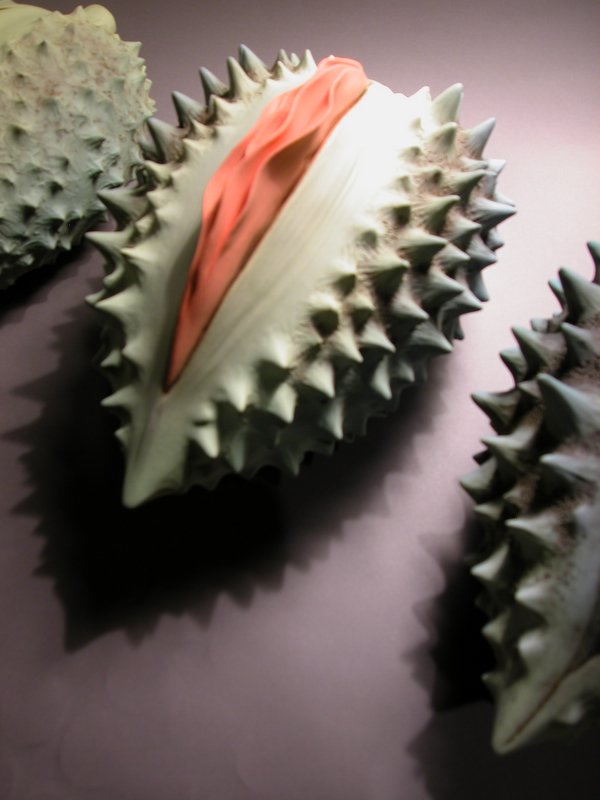
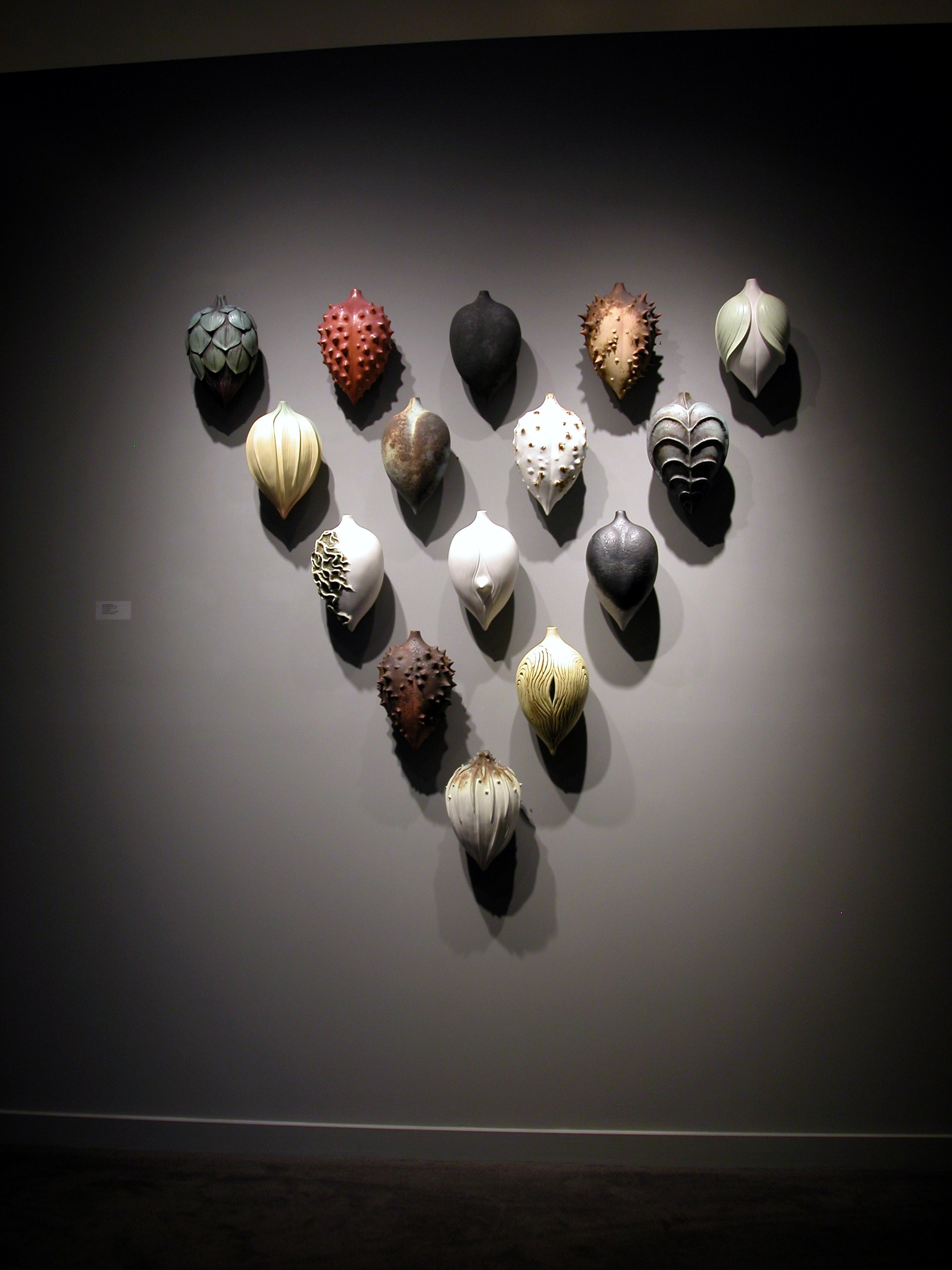
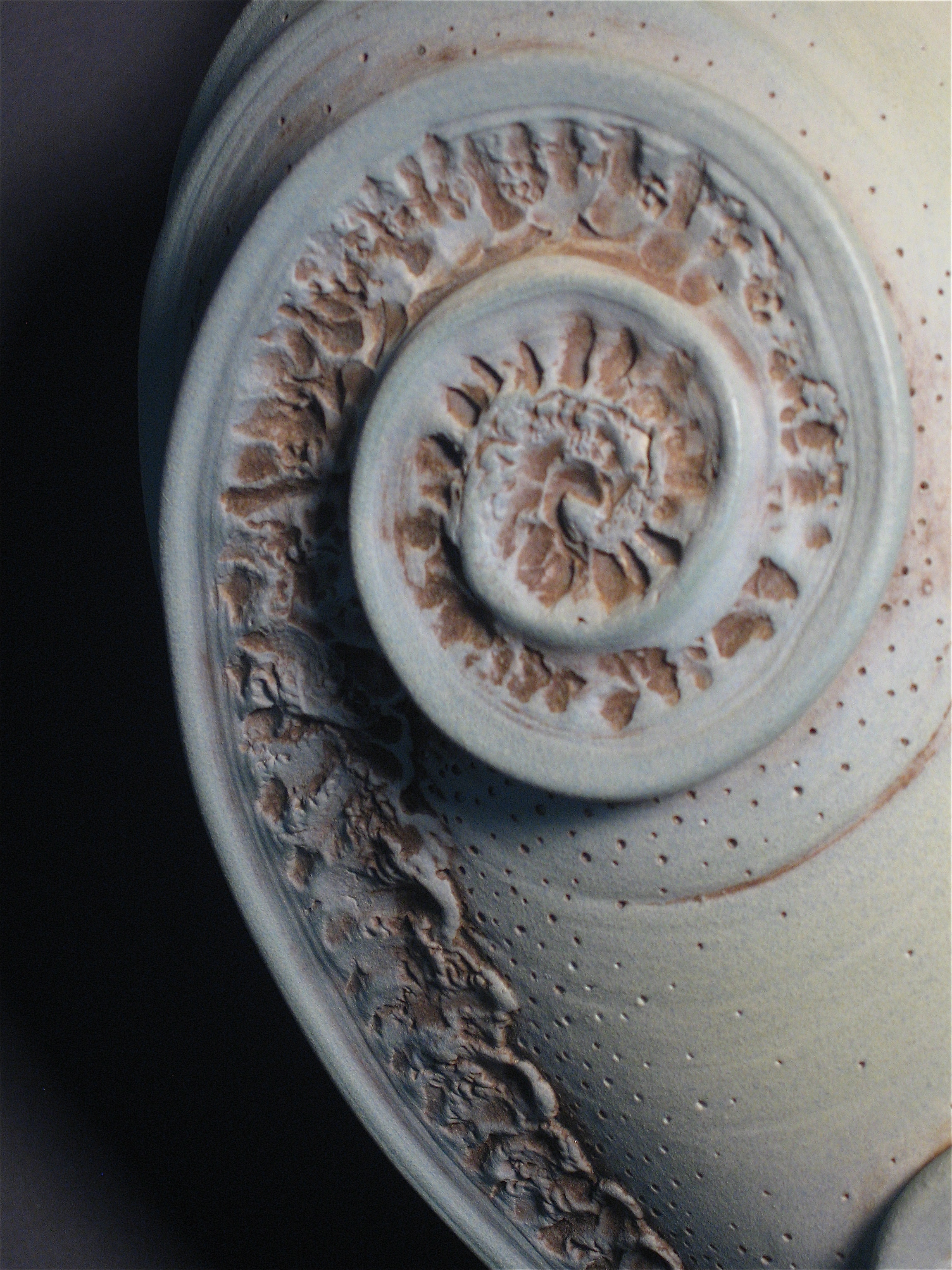

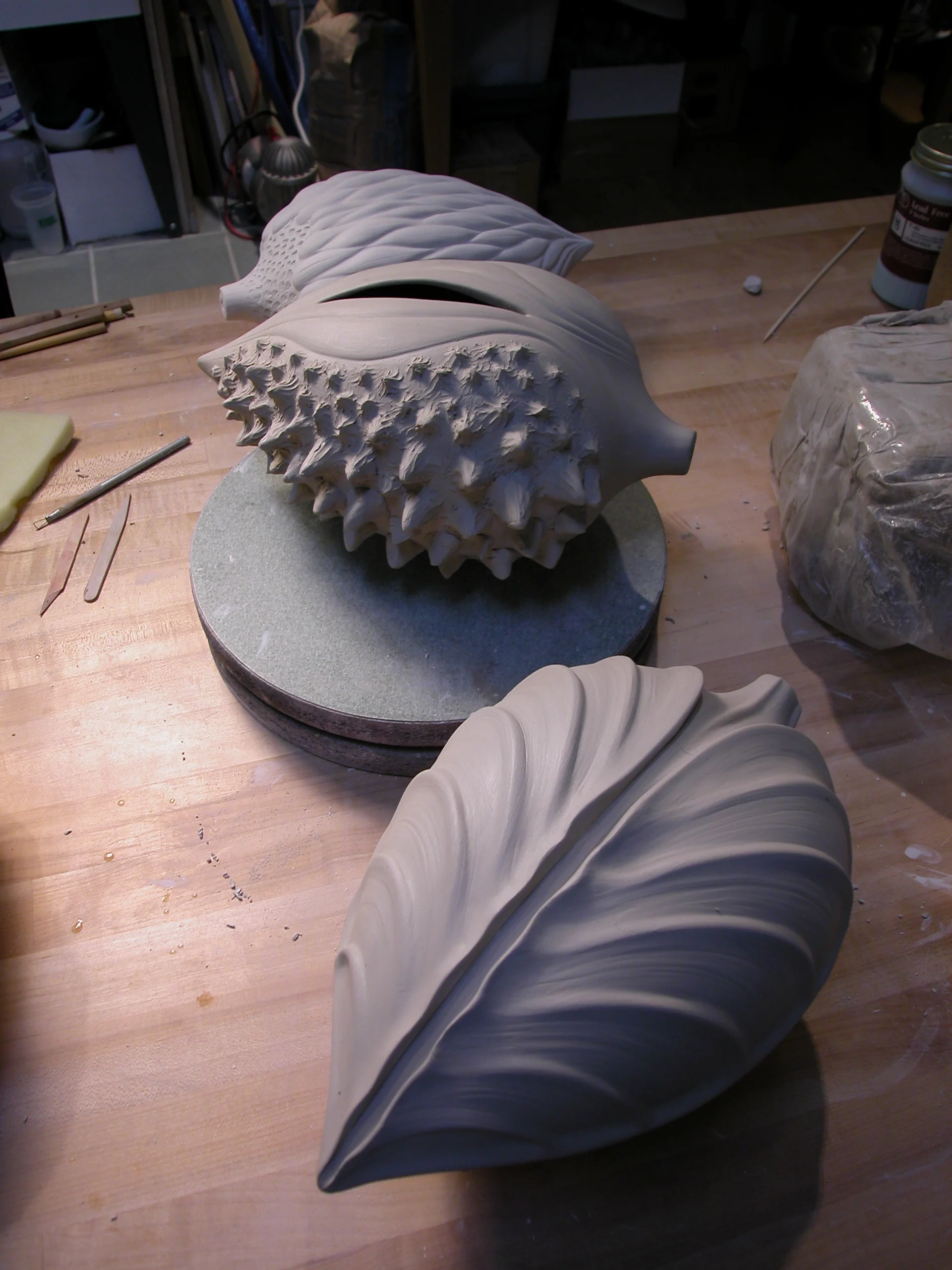
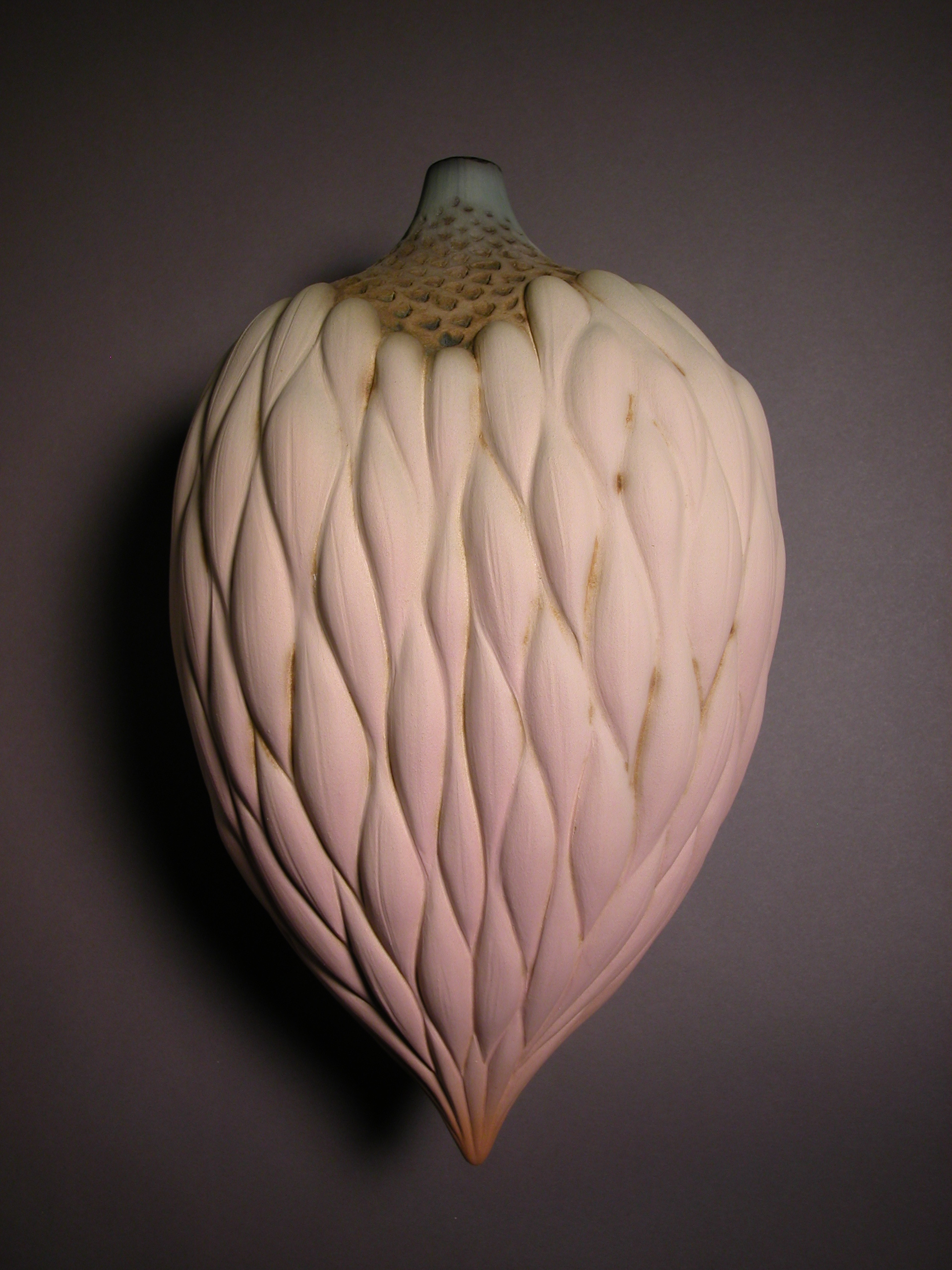
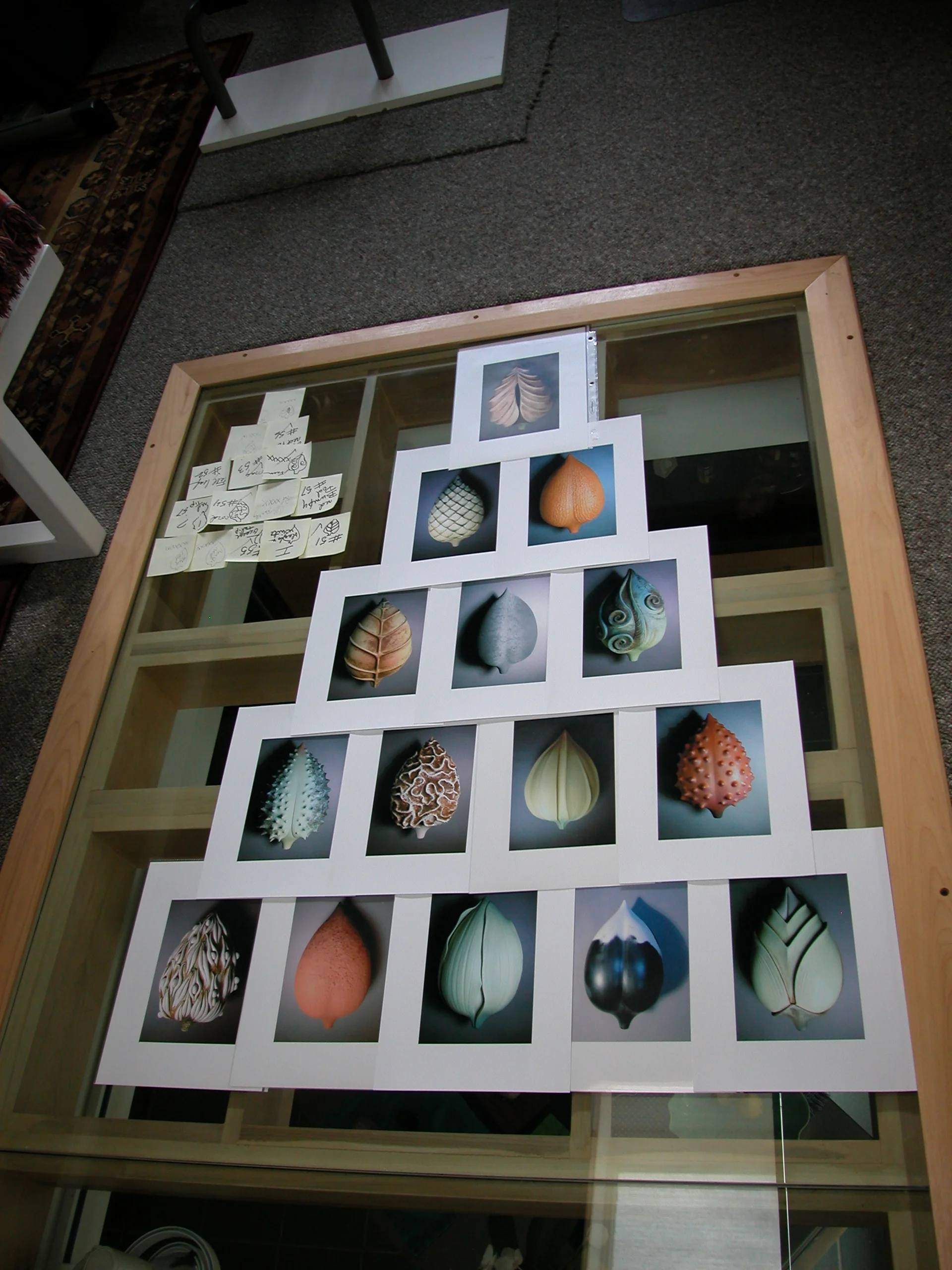
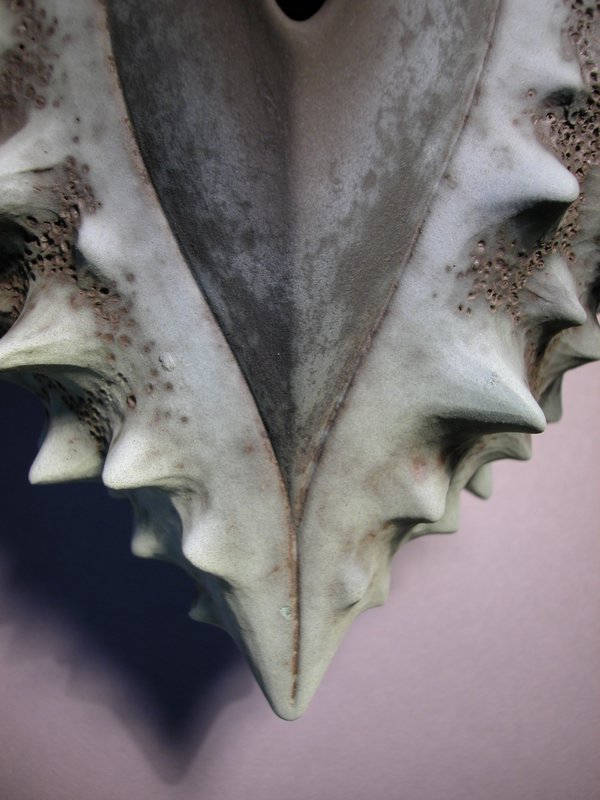

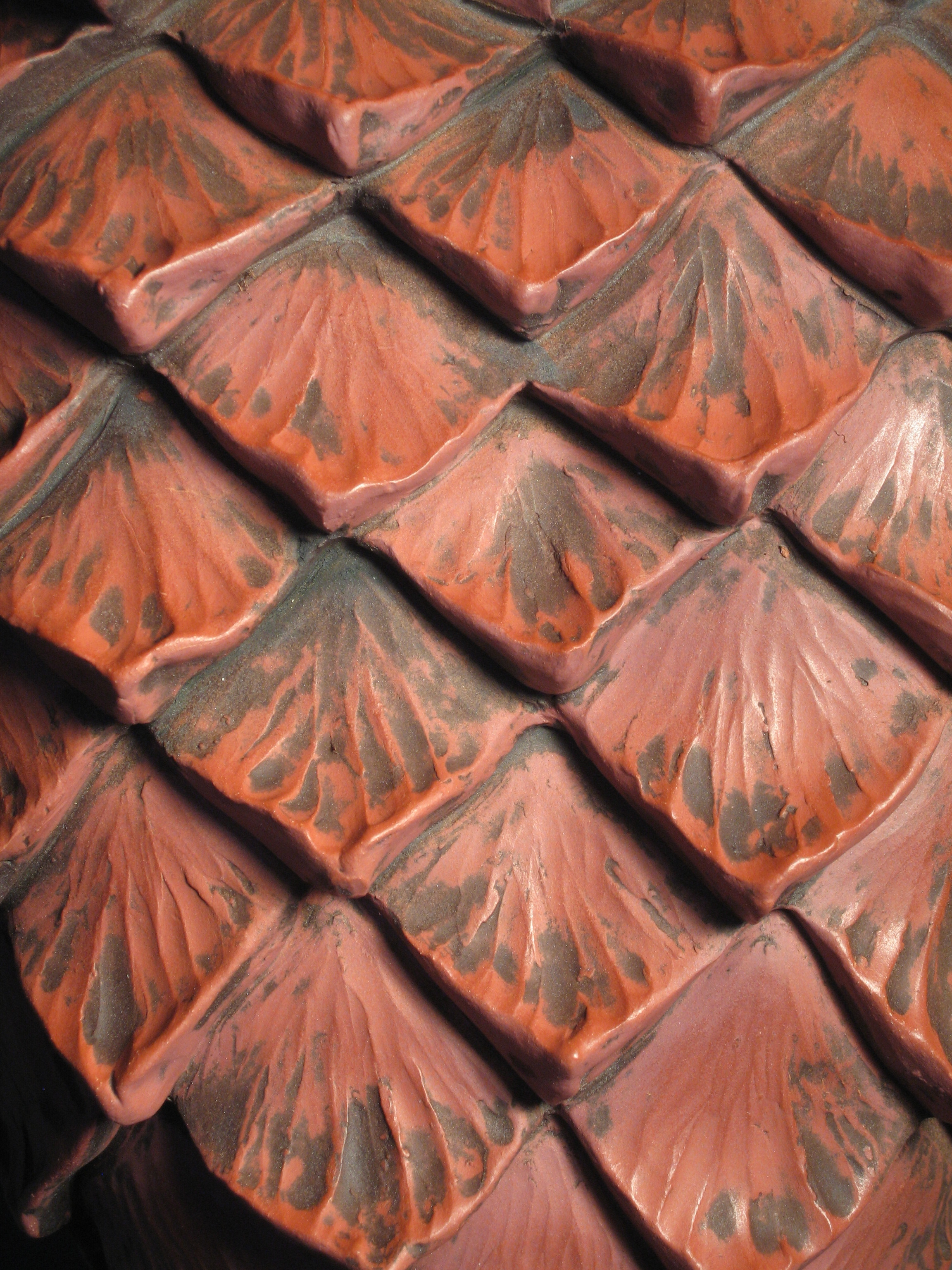
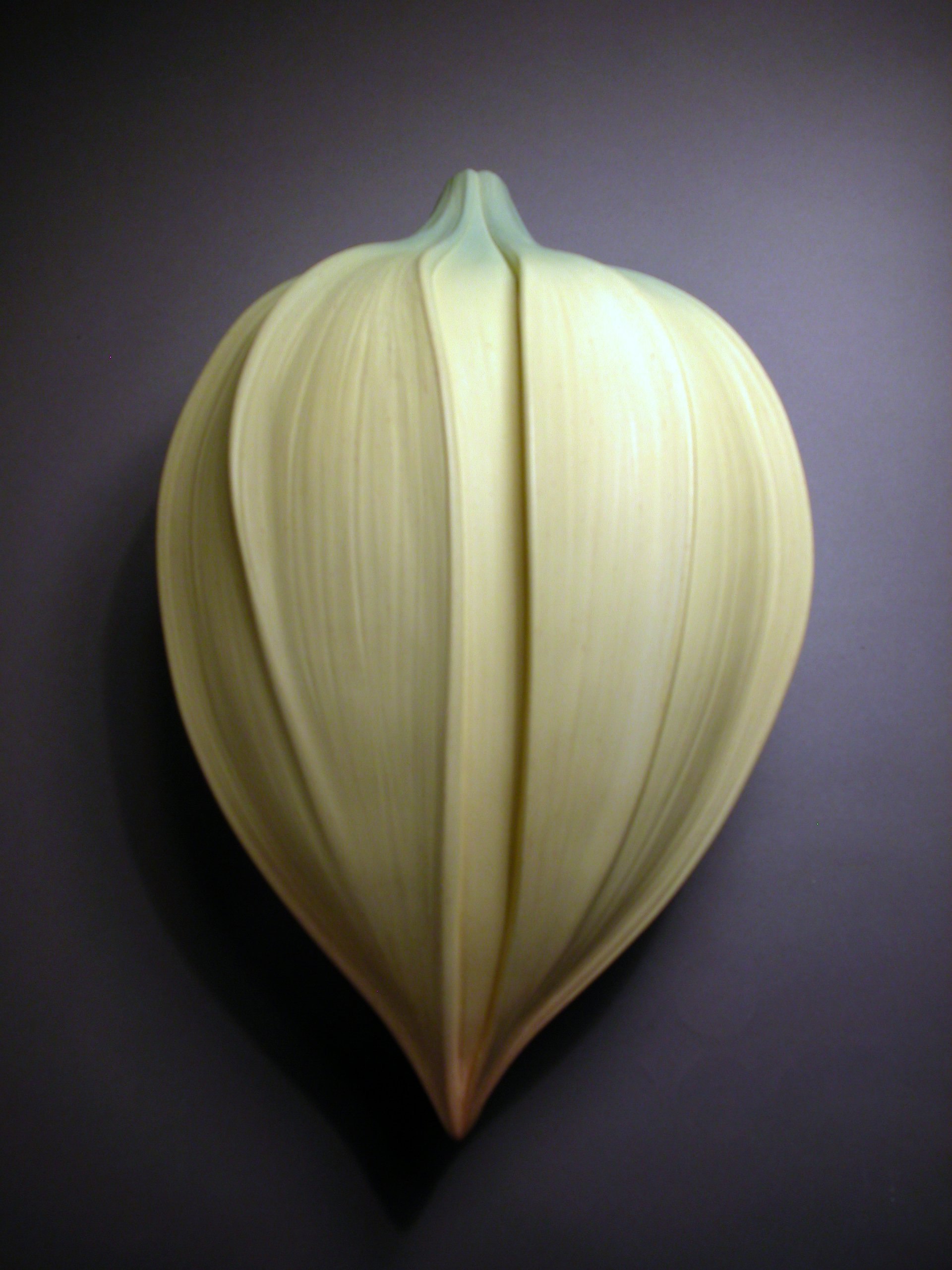
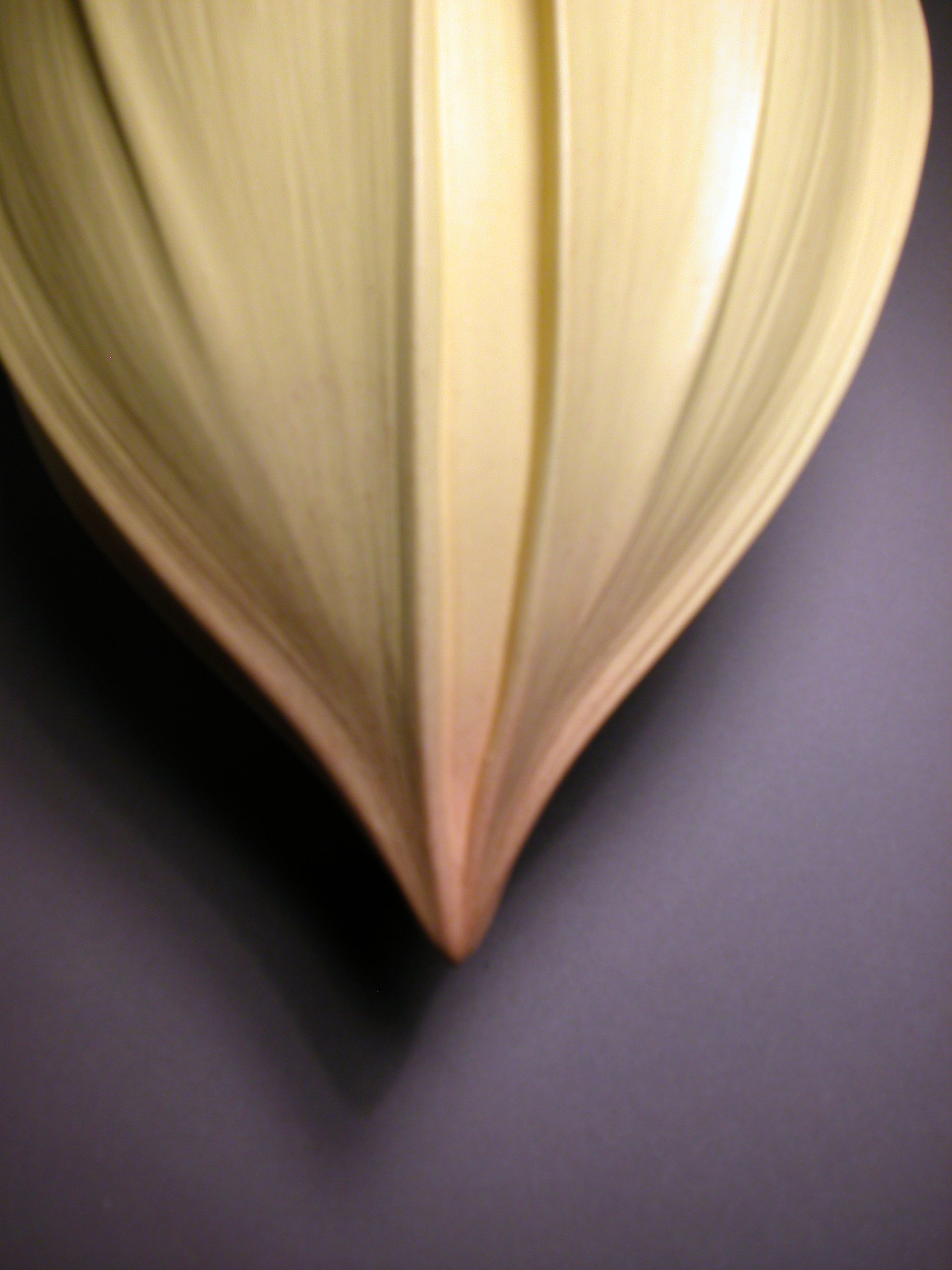




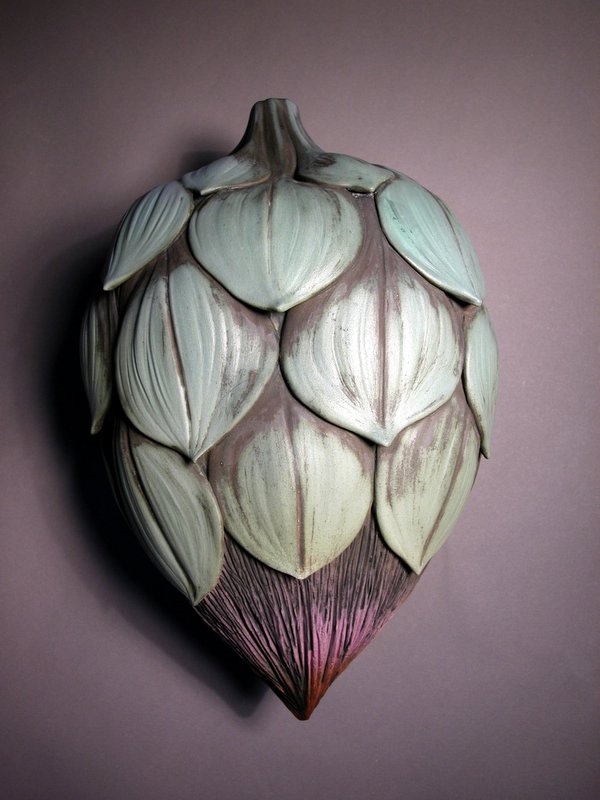
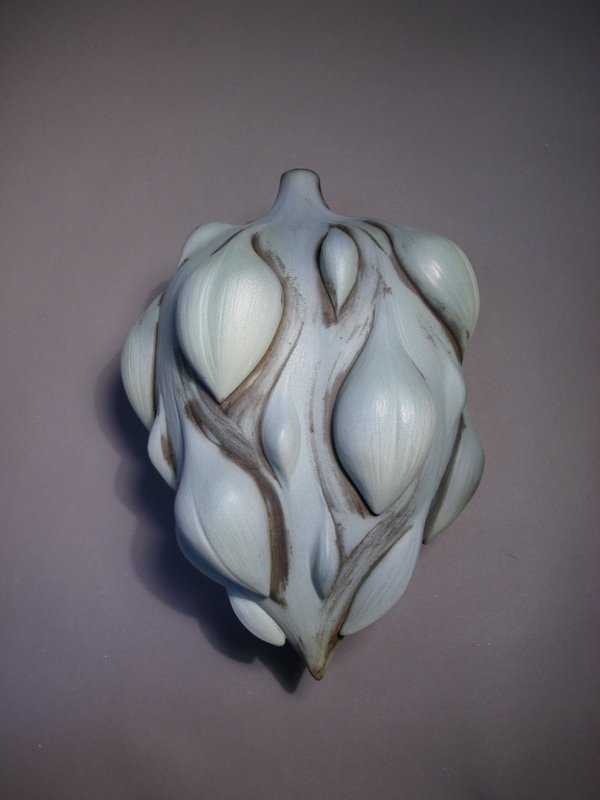
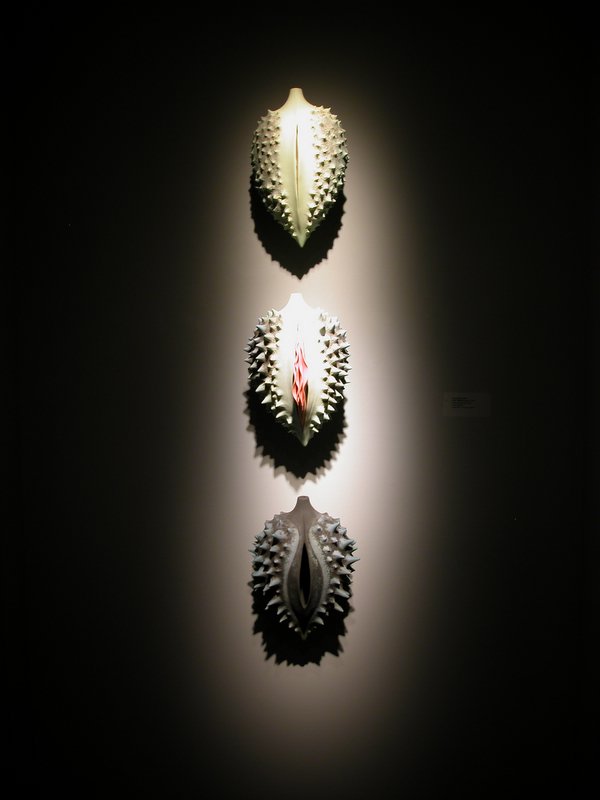

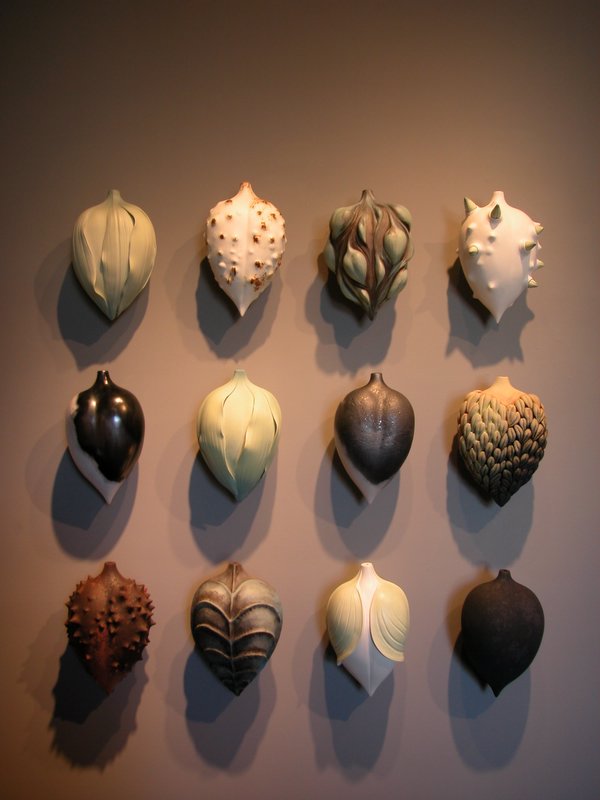
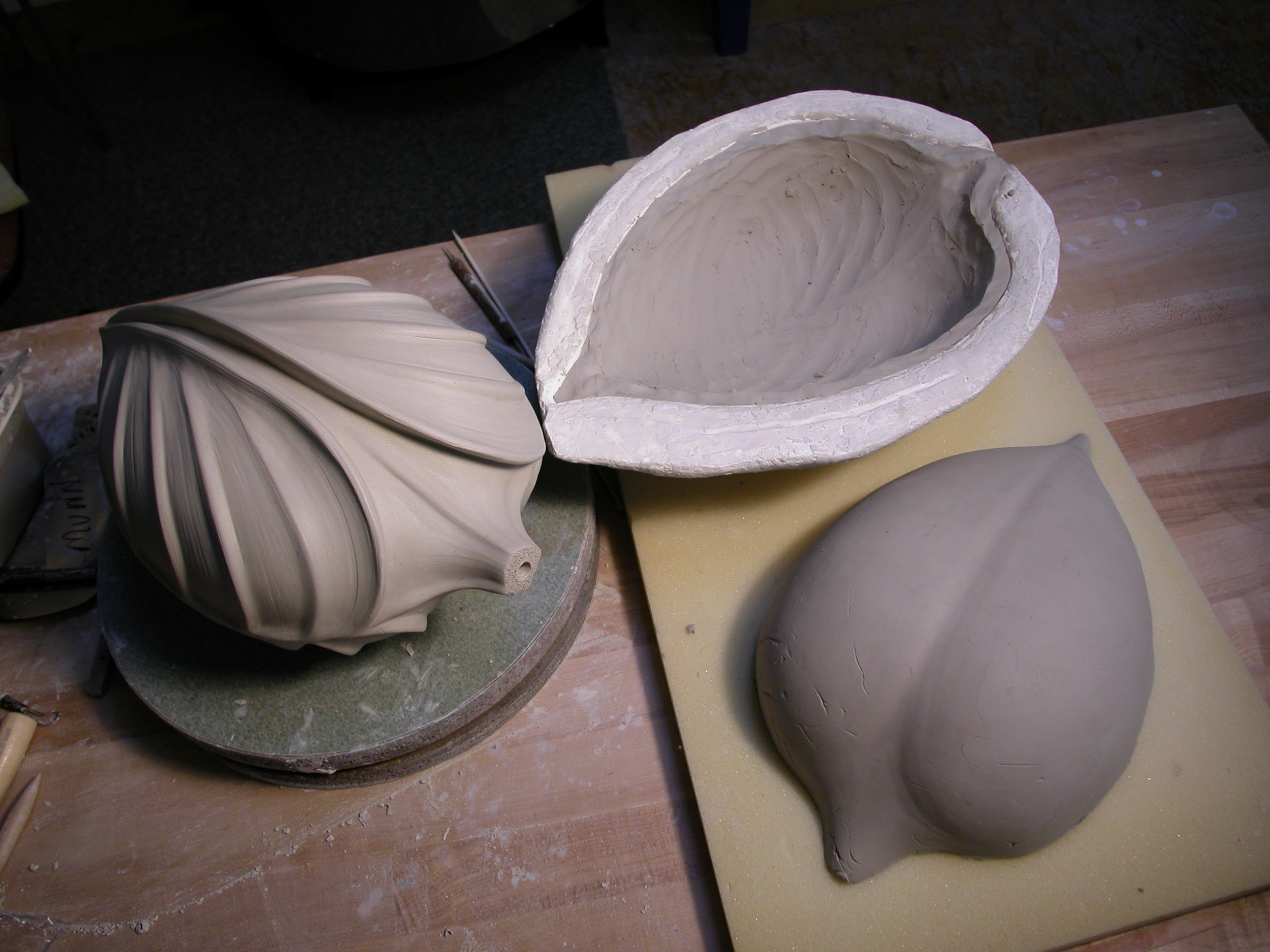

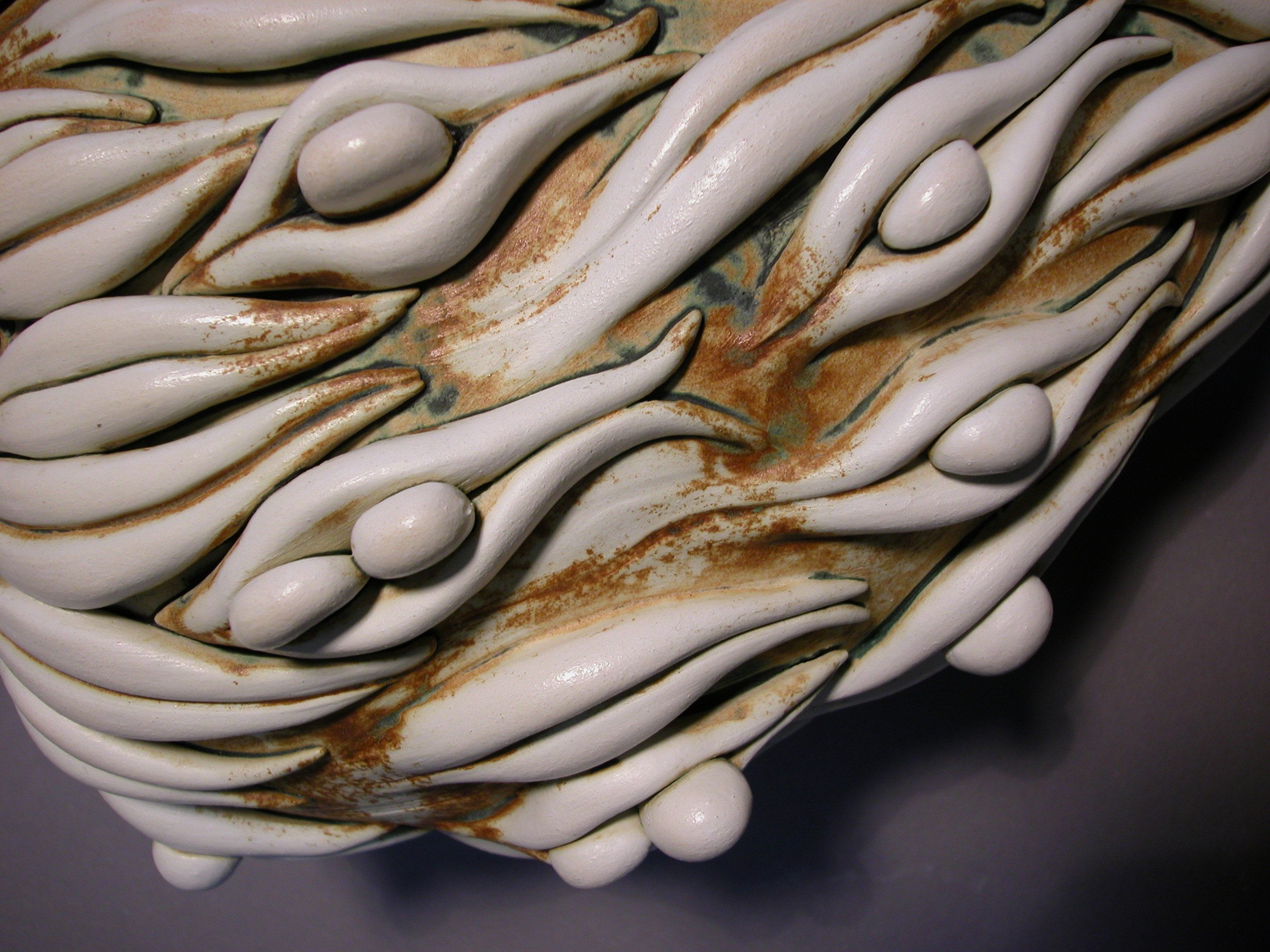
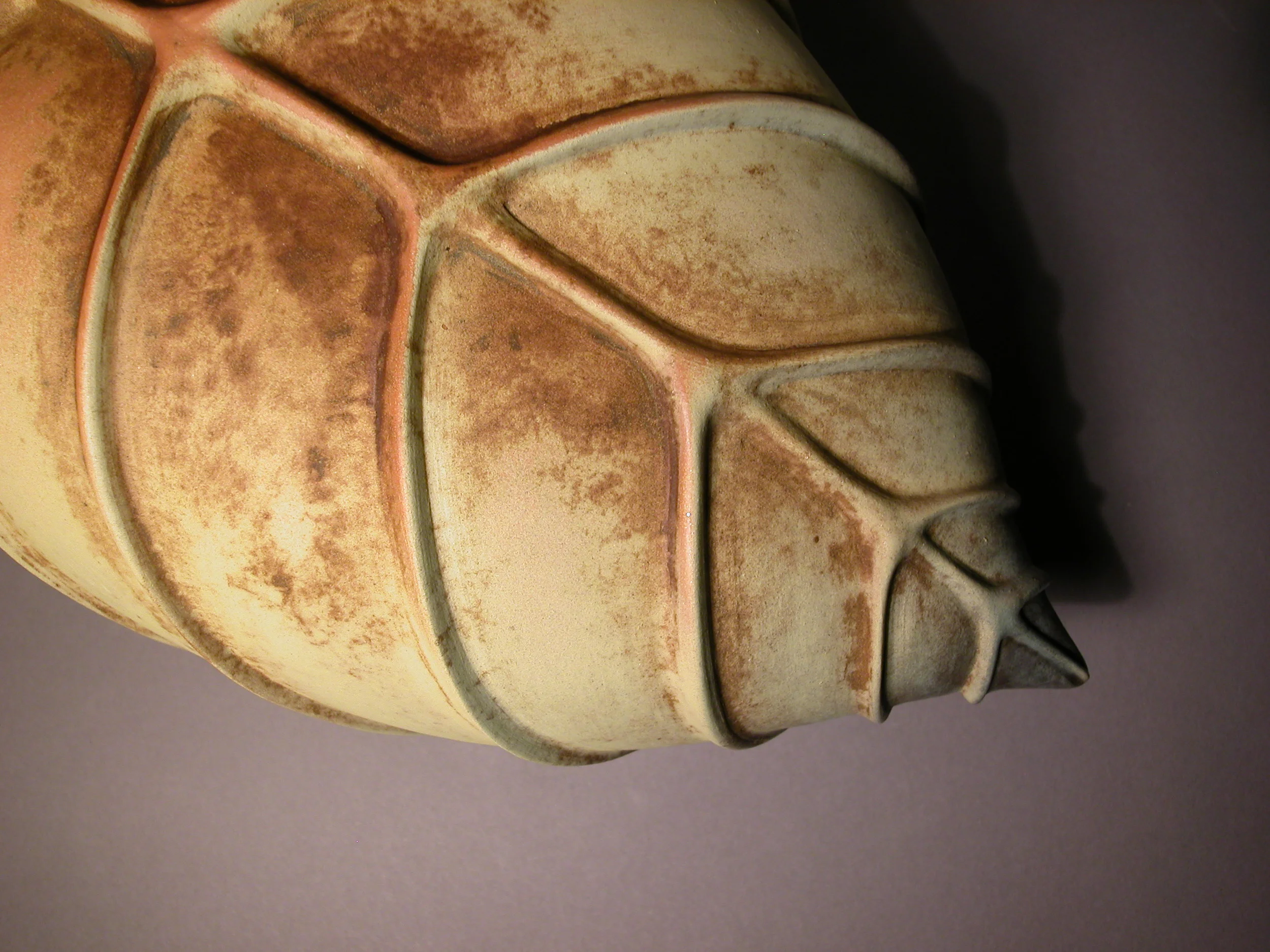

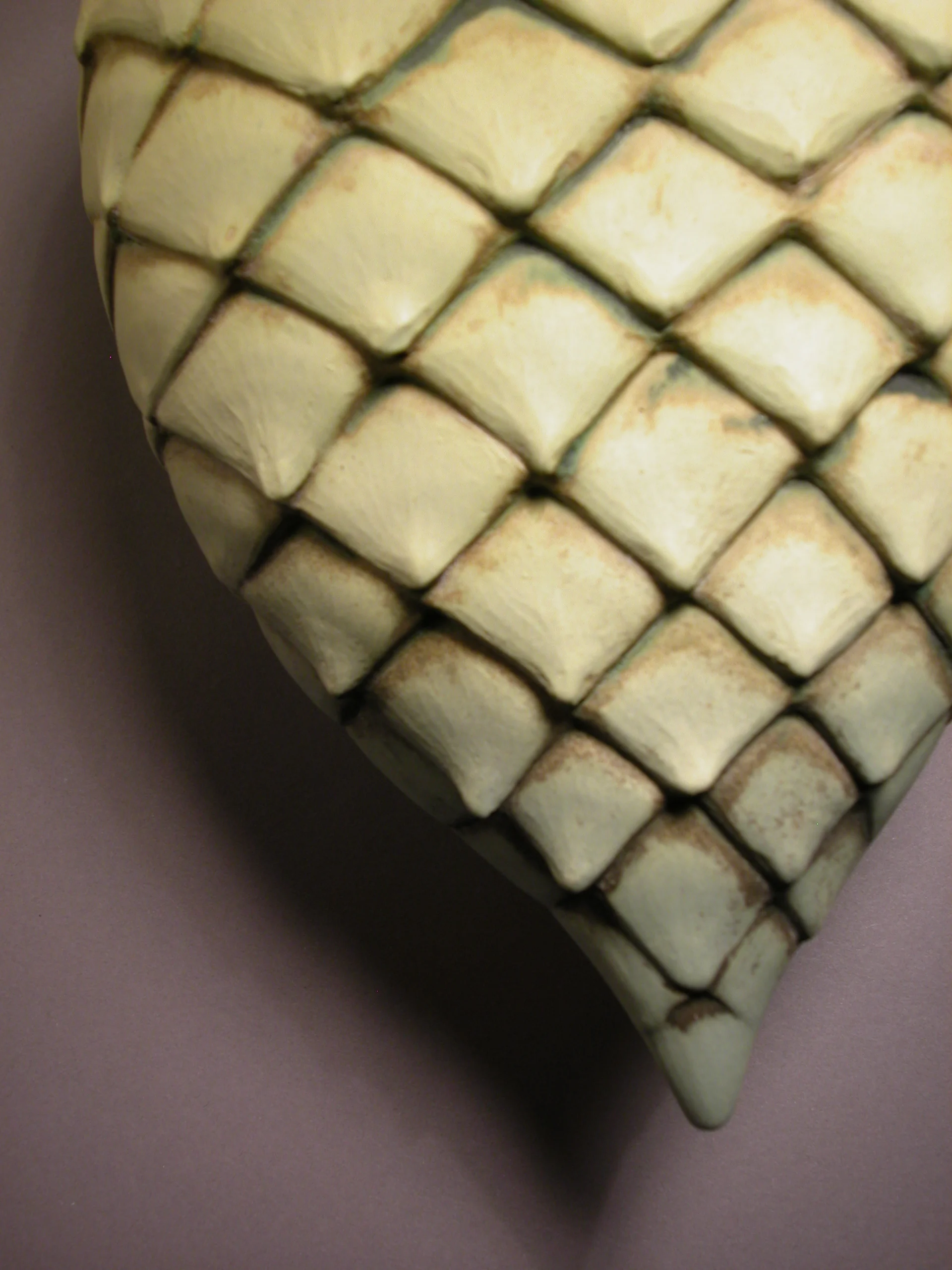
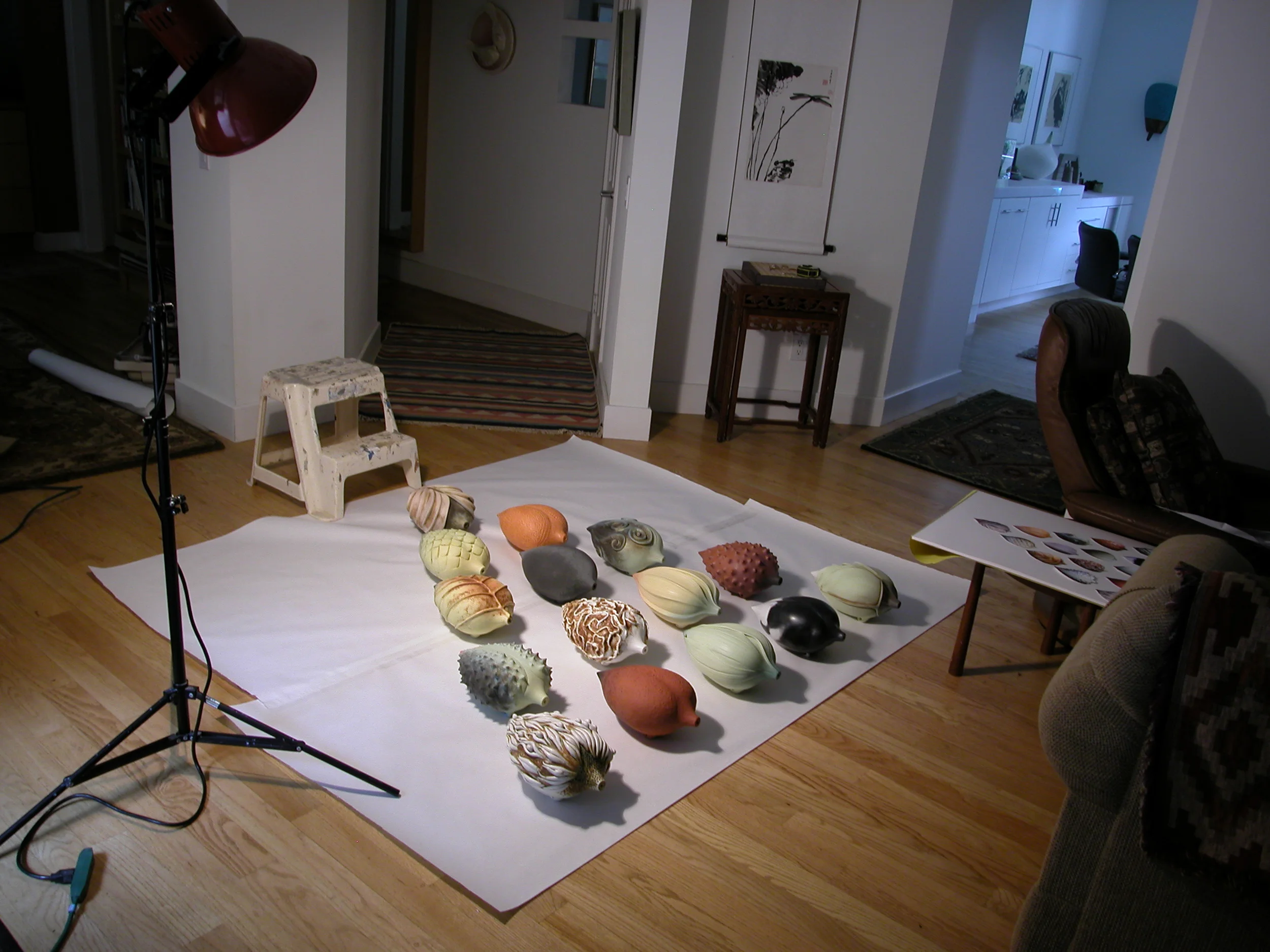
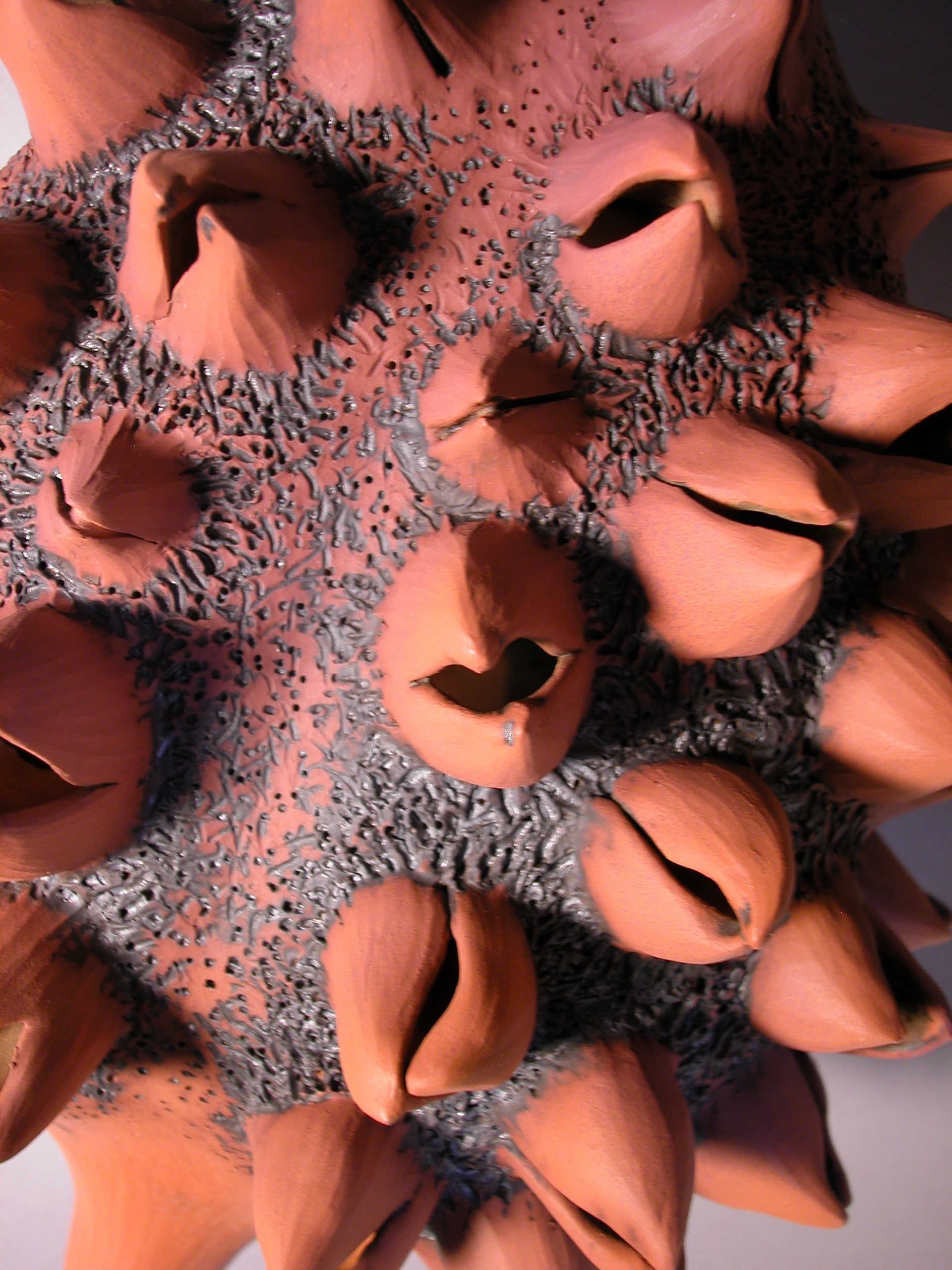
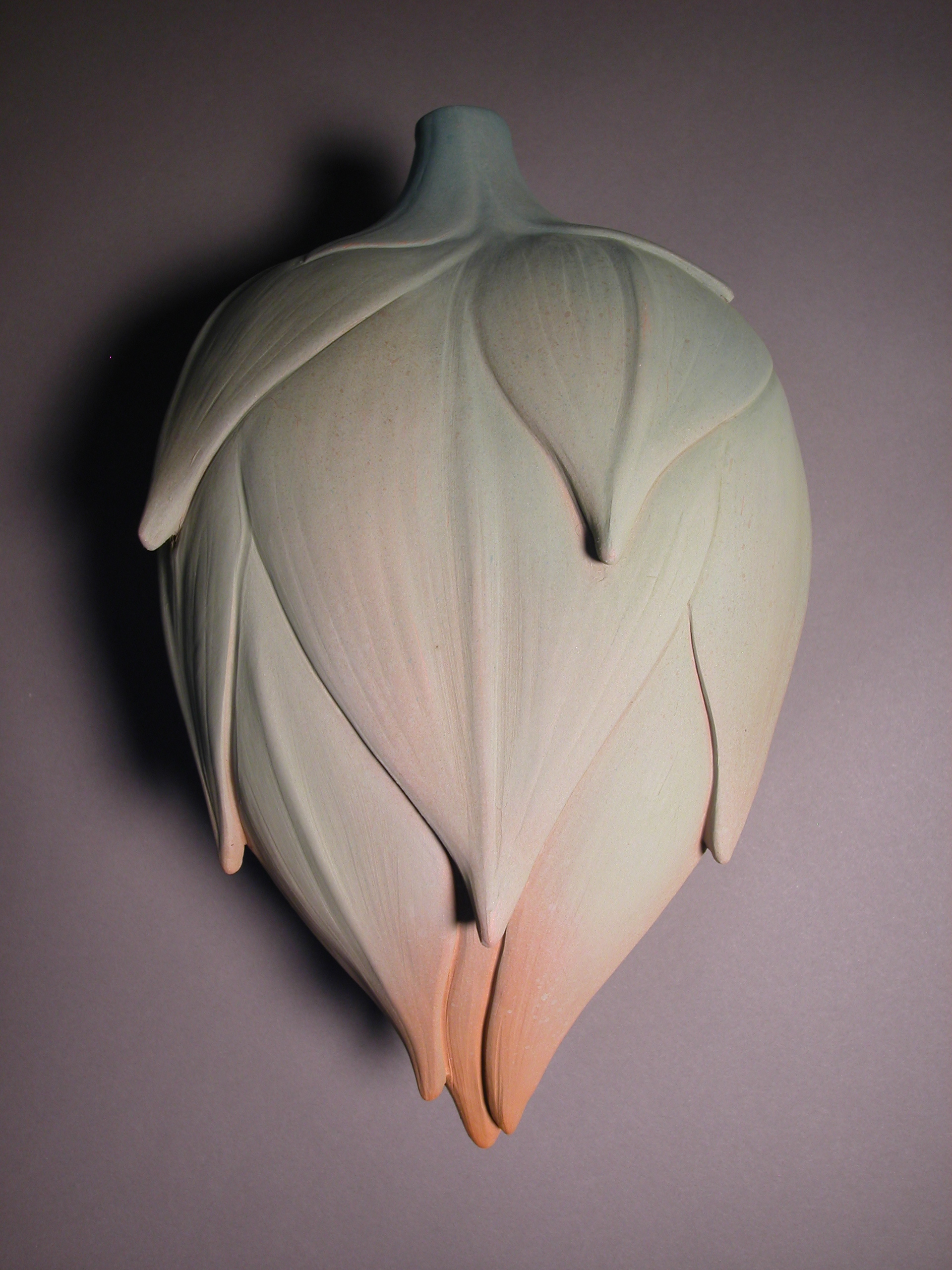
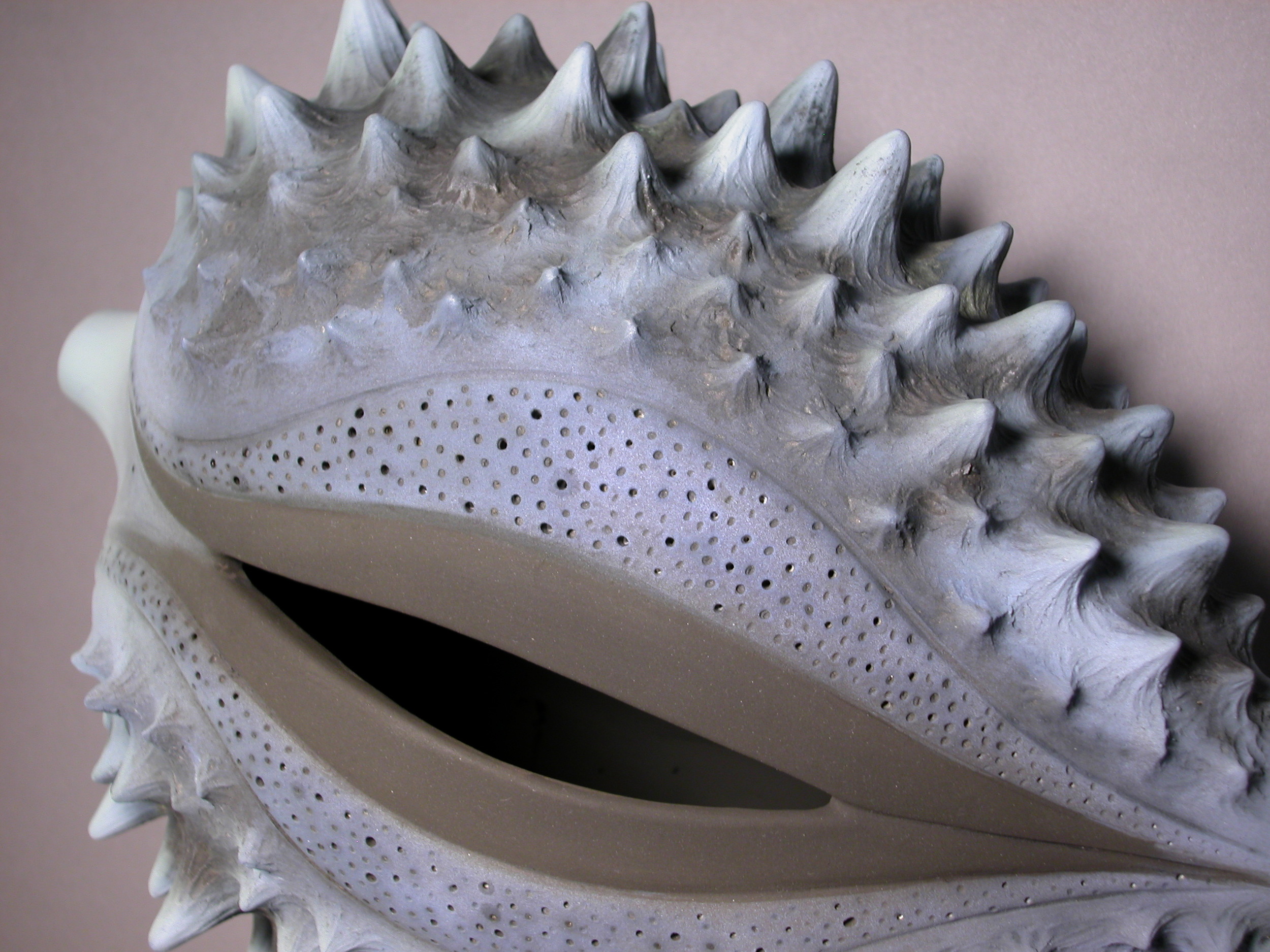

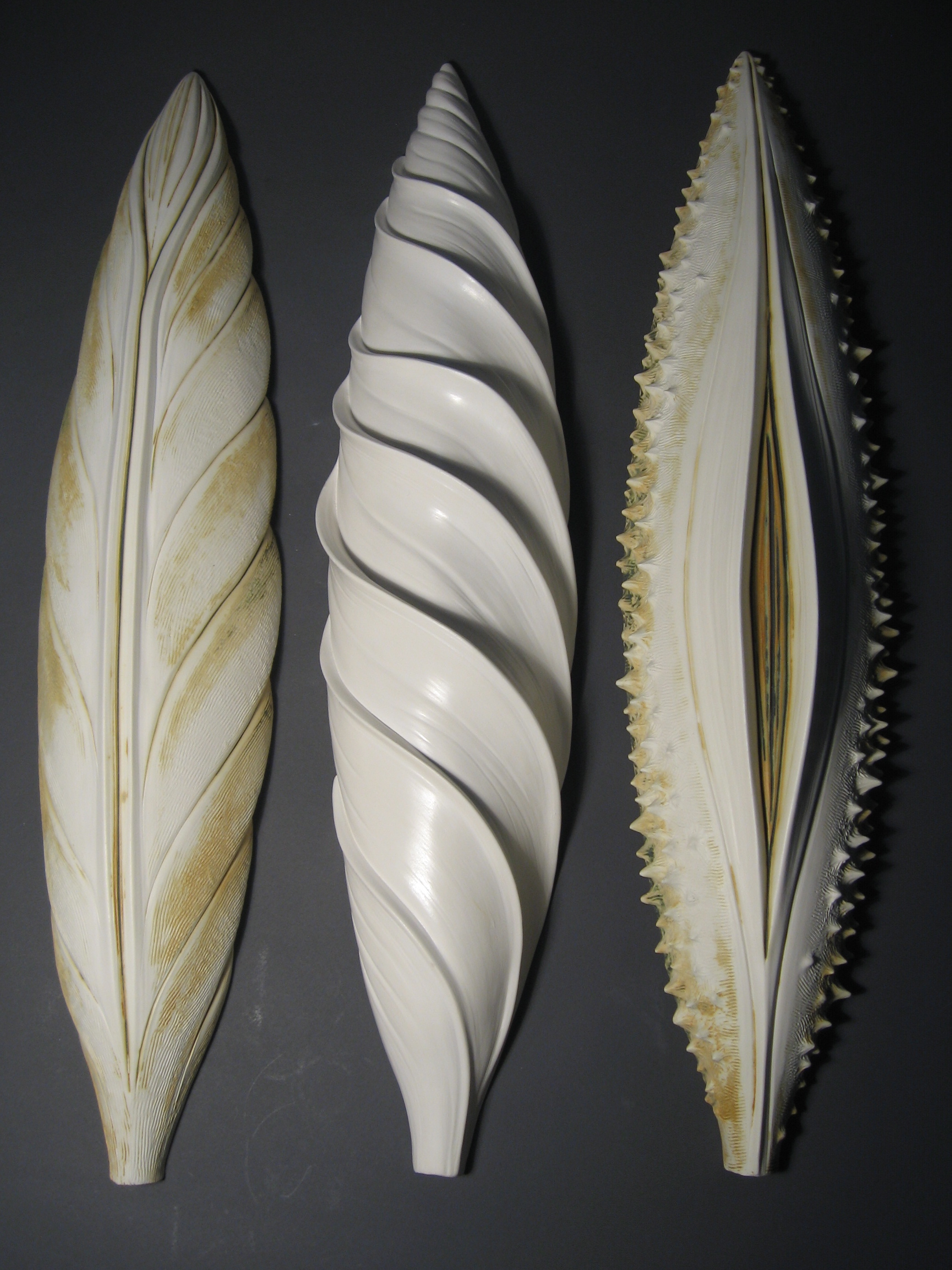
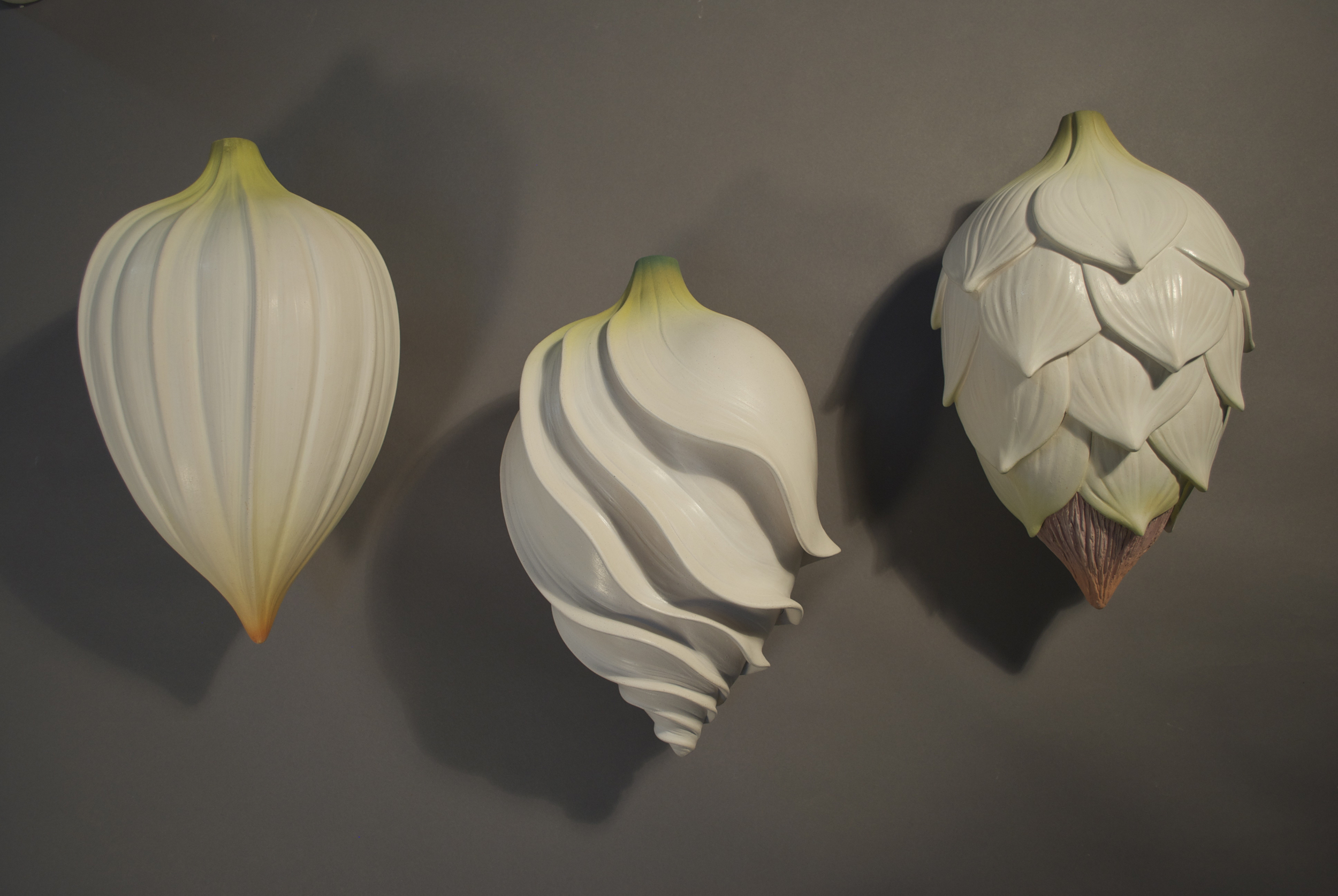
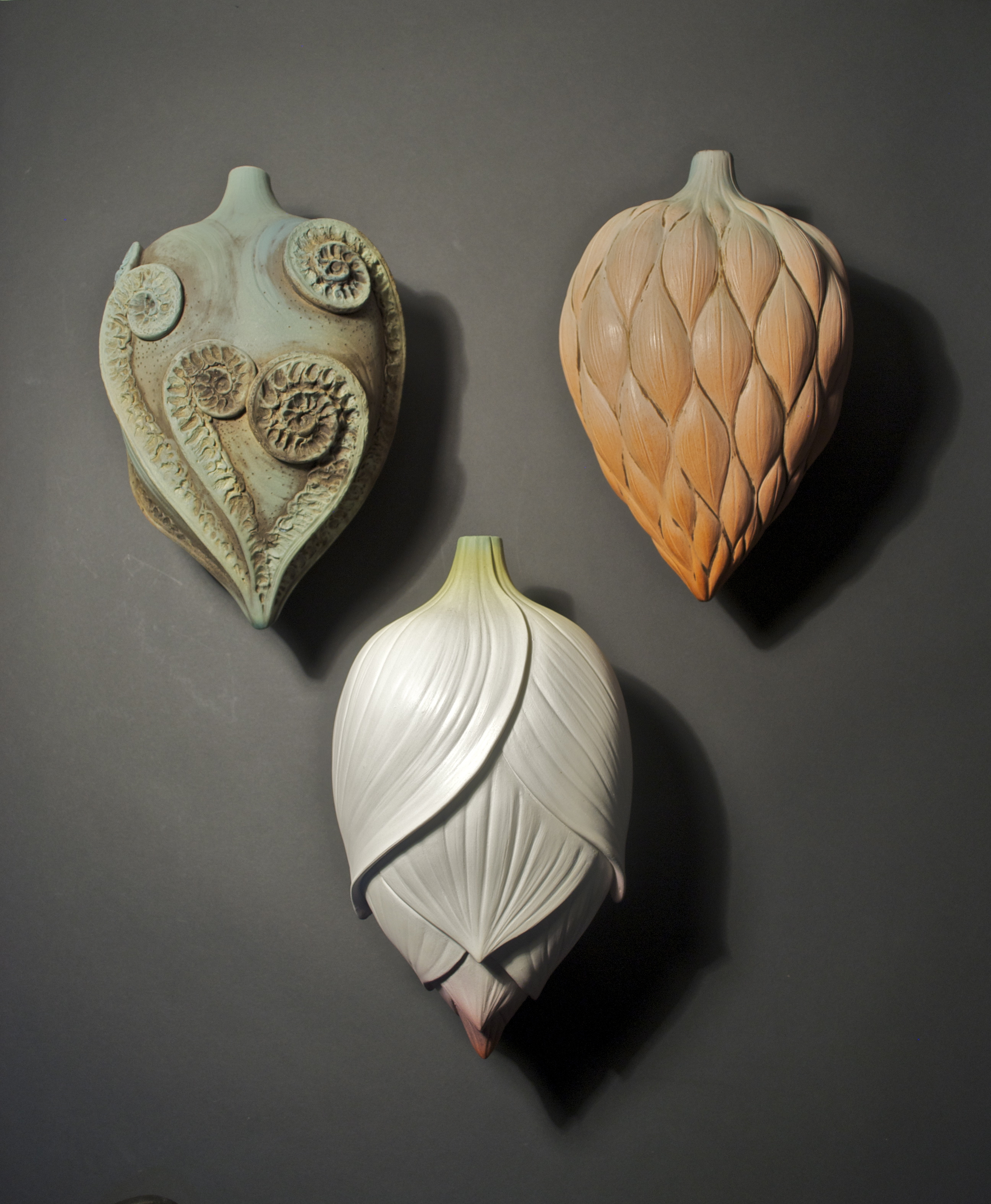

Pods have long been interesting to me as a form and as a metaphor for the feminine, the womb, and potential. I’ve also been intrigued by how many different sizes, shapes, textures and colors they come in; the possibilities are almost limitless when you start combining and evolving individual elements. Despite the fact that I have been working with idea of pods for many years, I am still fascinated with both the form and the multitude of ideas that continue to inspire and guide my work.
That said, every journey has a beginning and this one started with the Royal Empress tree pod. I first encountered the form growing by the railroad tracks in Asheville near Odyssey, a well know ceramic center. After plucking a winter branch with a cluster of pods I set this newly captured inspiration aside to ponder for while as I often do. After walking by this cherished find in my studio on a daily basis and “pondering” it, I discovered the origins of the Royal Empress tree, also known as the Royal Paulownia tree.
It’s a very fast growing invasive tree from China, where it’s often used as an ornamentation along roadsides. That fact alone caught my imagination, not to mention that it sounded like a shaman’s rattle when shaken. The flowers are purple clusters that bloom in May along with wild wisteria. Though similar in color the flowers are quite different. Wisteria is a vine with cascading clusters of flowers, while the Paulownia tree has clusters that grow upright like a Christmas tree. One thing I knew was that this heart shaped form which seemed more and more archetypal was going to become an important part of my journey as an artist.
Fast forward nearly a year. While teaching my first clay workshop at Odyssey, I had my class go on a treasure hunt for “natural stuff” in the surrounding area. Before we left, I showed them the blackish pod cluster and mentioned I would take them to see the tree by the railroad tracks where I had picked it. That’s when we discovered the pods in their fuzzy spring green coat! Later that day, I made my first small pinched half-pod. Who knew at the time that it would become so much more.
After returning to my studio in Greenville, that small form became the prototype for the first wall pod. After sculpting a larger half-pod in clay, I created a press mold in plaster. This then allowed me to make two halves and put them together to create a smoothly finished form ready for me to then add texture or carve into the surface. Each one of these perfectly smooth Pod forms has become like a small white, 3D canvas. I then alter them to reflect whatever is inspiring me at the time.
The first showing of this new series was a 15 Pod Triangle shown at Blue Spiral 1 along with the paintings of the late Will Henry Stevens. It was dynamic, yet feminine; soft at times, dark and crusty at others. It surprised all of us as we saw it for the first time after its installation in the gallery. Visually, the impact was such a blend of strength and softness that it became the show’s center piece. I will never forget seeing it hanging for first time after Jorden Ahlers so expertly installed it. This was the beginning of my love affair with the “Pod” shape and all its evolutions thereafter. I was immediately struck with all of the incredible possibilities that small and large groupings could have in a space.
That first show has led to so many variations, some of which can be viewed in the Commissions section of my website. Even the ones that are similar in number can be entirely different depending on the installation site, spacing, and configuration, not to mention their individual visual story they tell through, color, texture, value, complexity and content.
As to the future direction of the Pods, only time will tell. Pods in general, continue to fascinate me. I know this because of all the little pods I discover in my pockets following our morning walks with the dogs. Pods, bulbs, tubors, along with all things that “sprout” continue to offer rich potential for my the creative explorations on my journey.
Another fun fact: Paulownia is known in Japanese as kiri, specifically referring to P. tomentosa; it is also known as the "princess tree." It was once customary to plant a Paulownia tree when a baby girl was born, and then to make it into a dresser as a wedding present when she married. Paulownia is emblem of the office of prime minister and also serves as the emblem of the cabinet and the government (vis-à-vis the chrysanthemum being the Imperial Seal of Japan).


